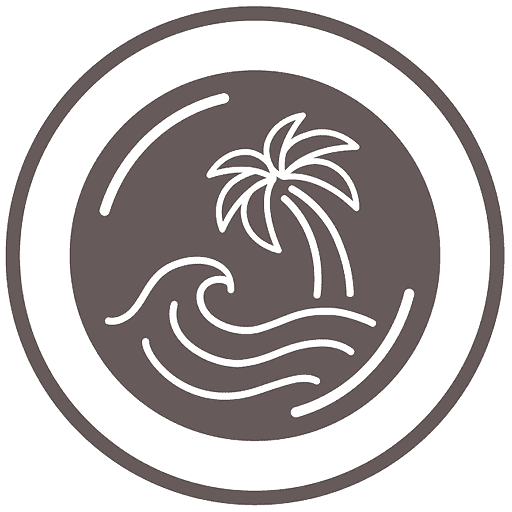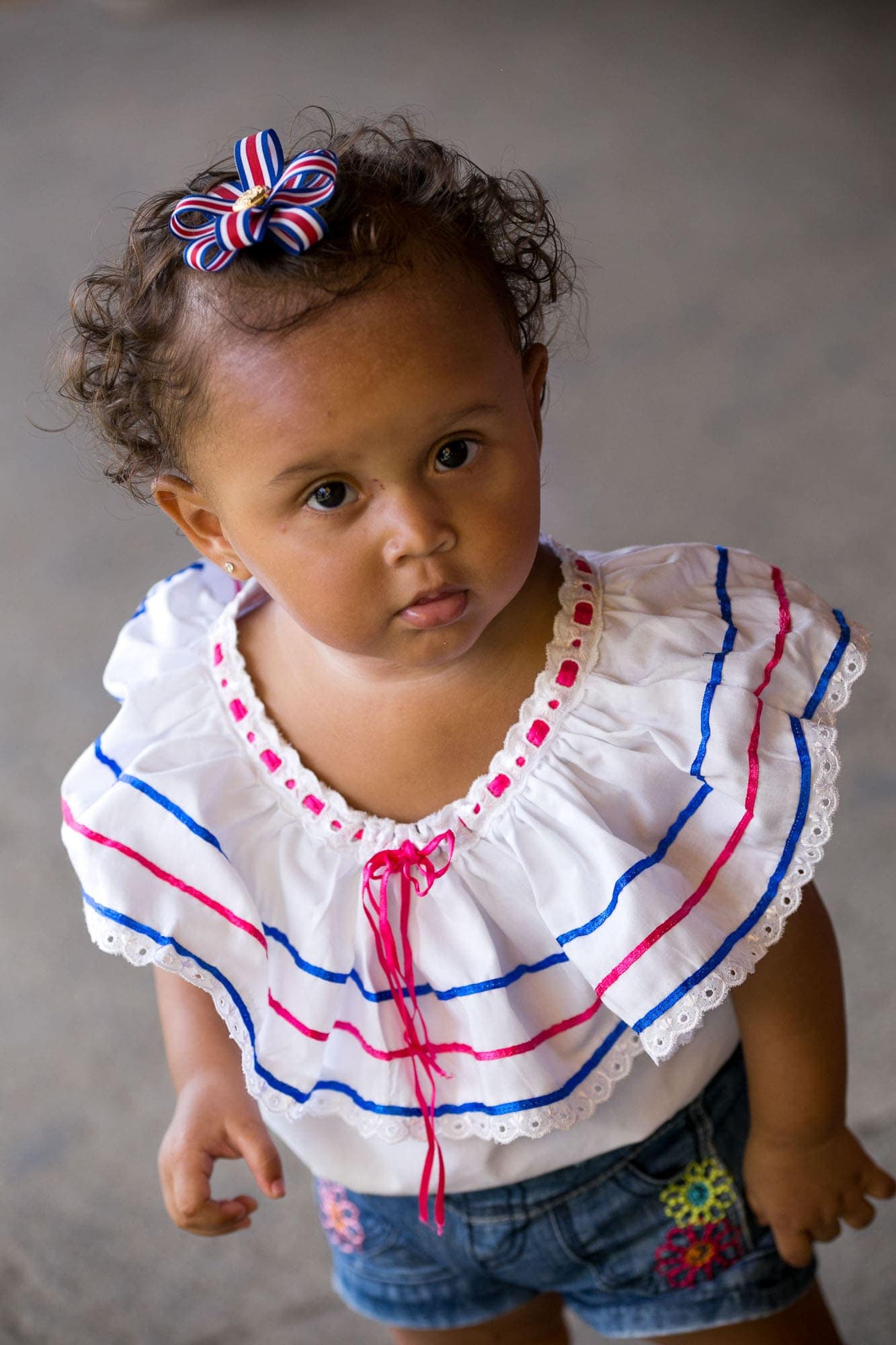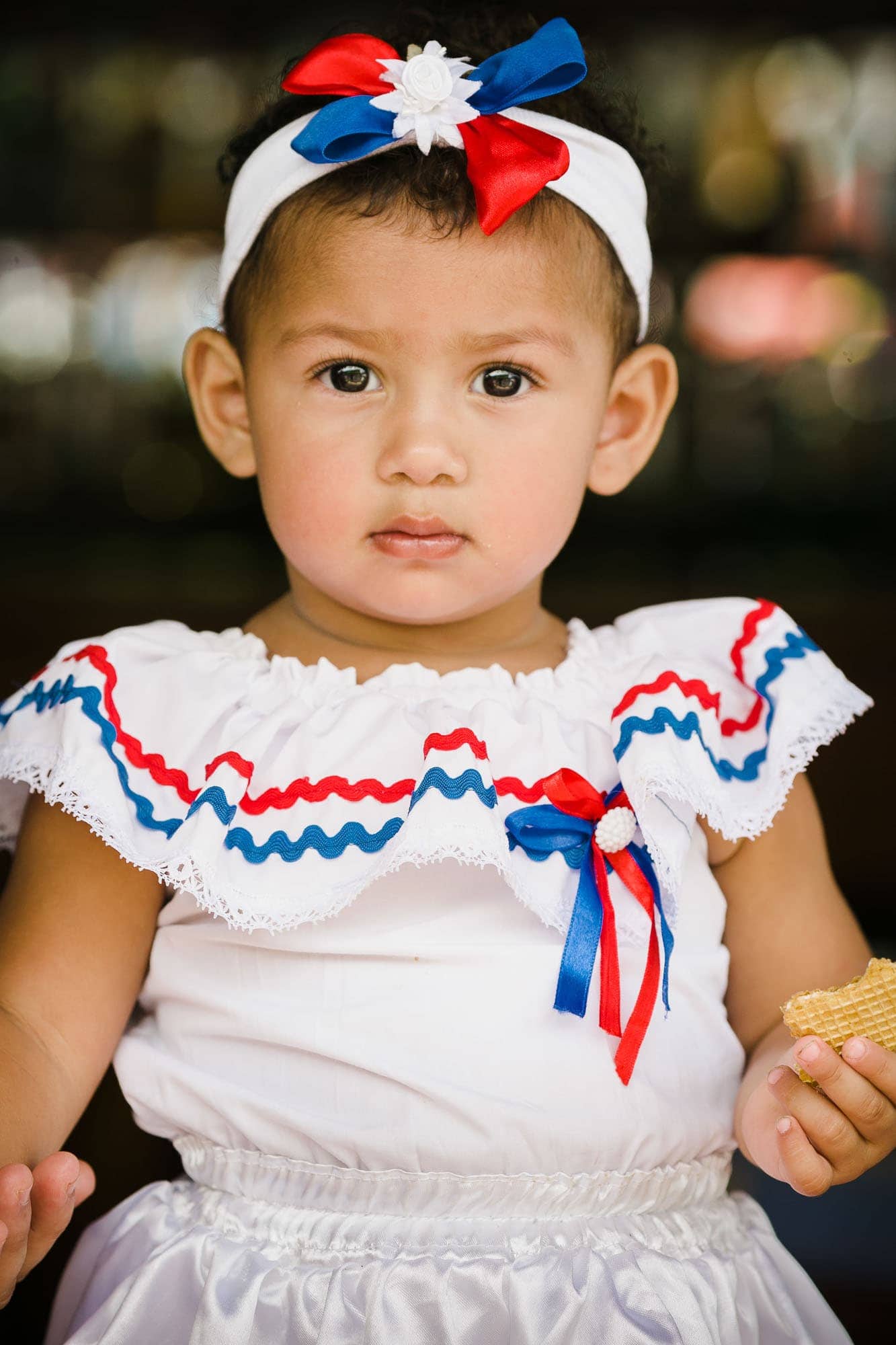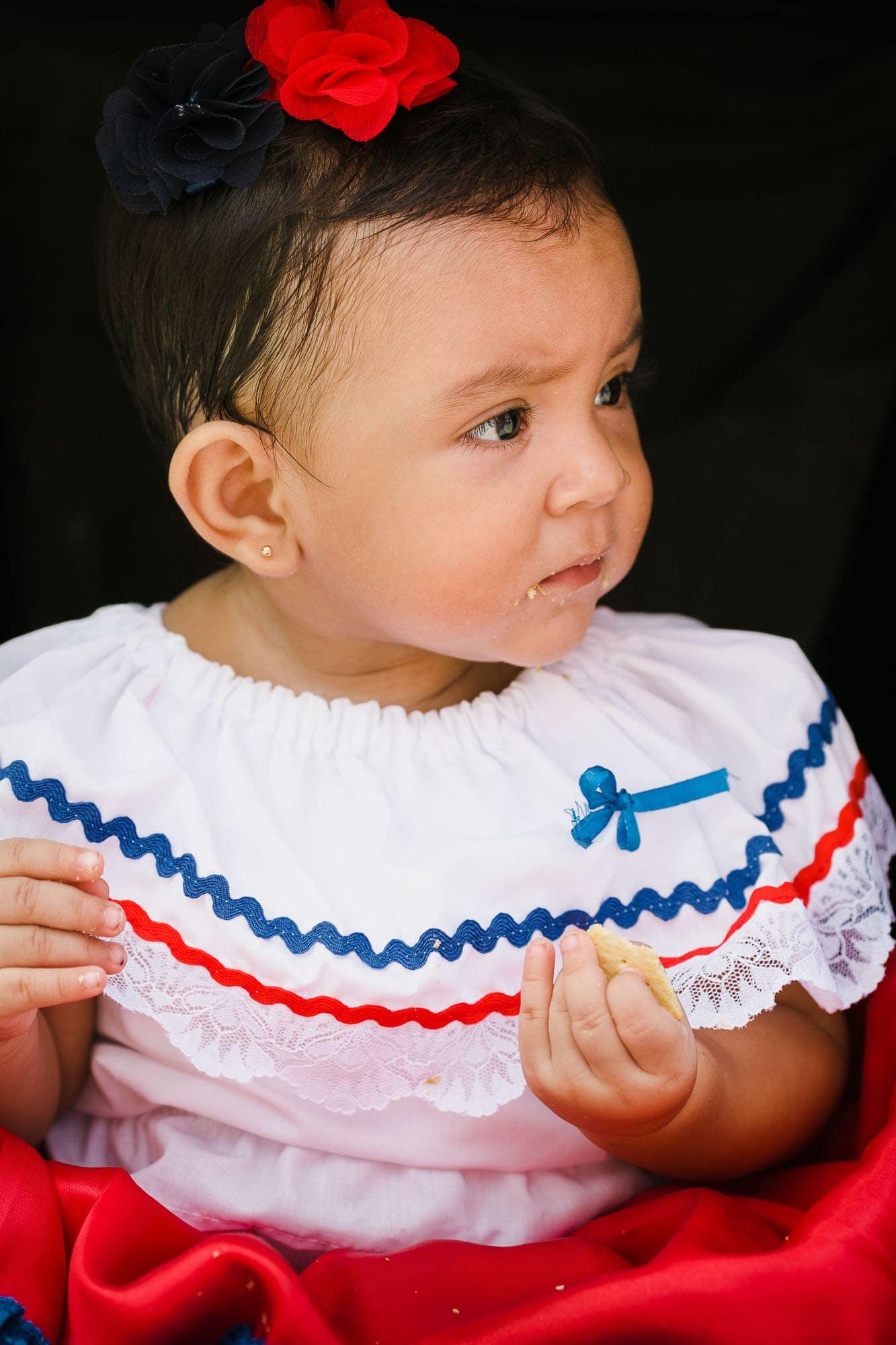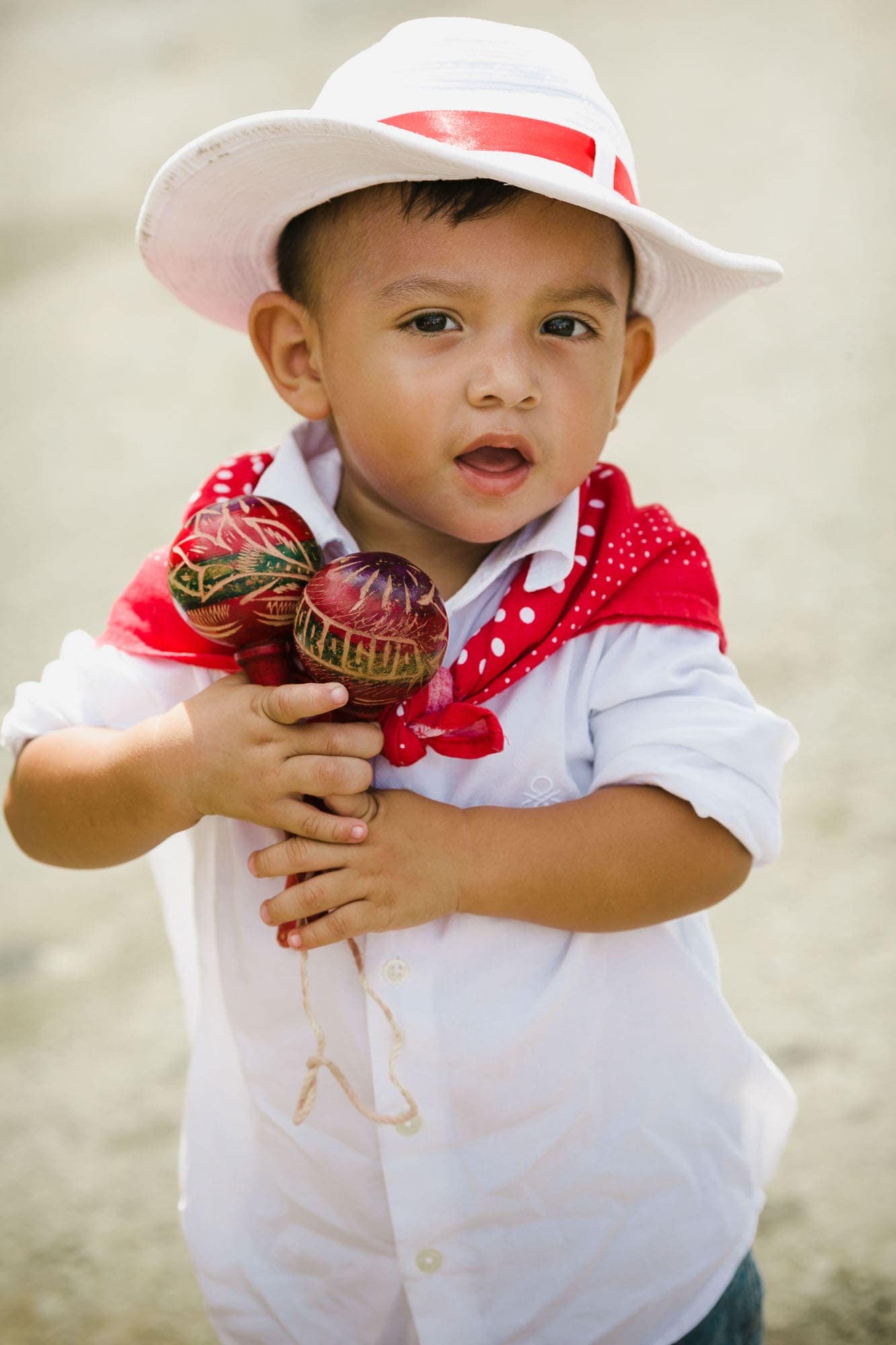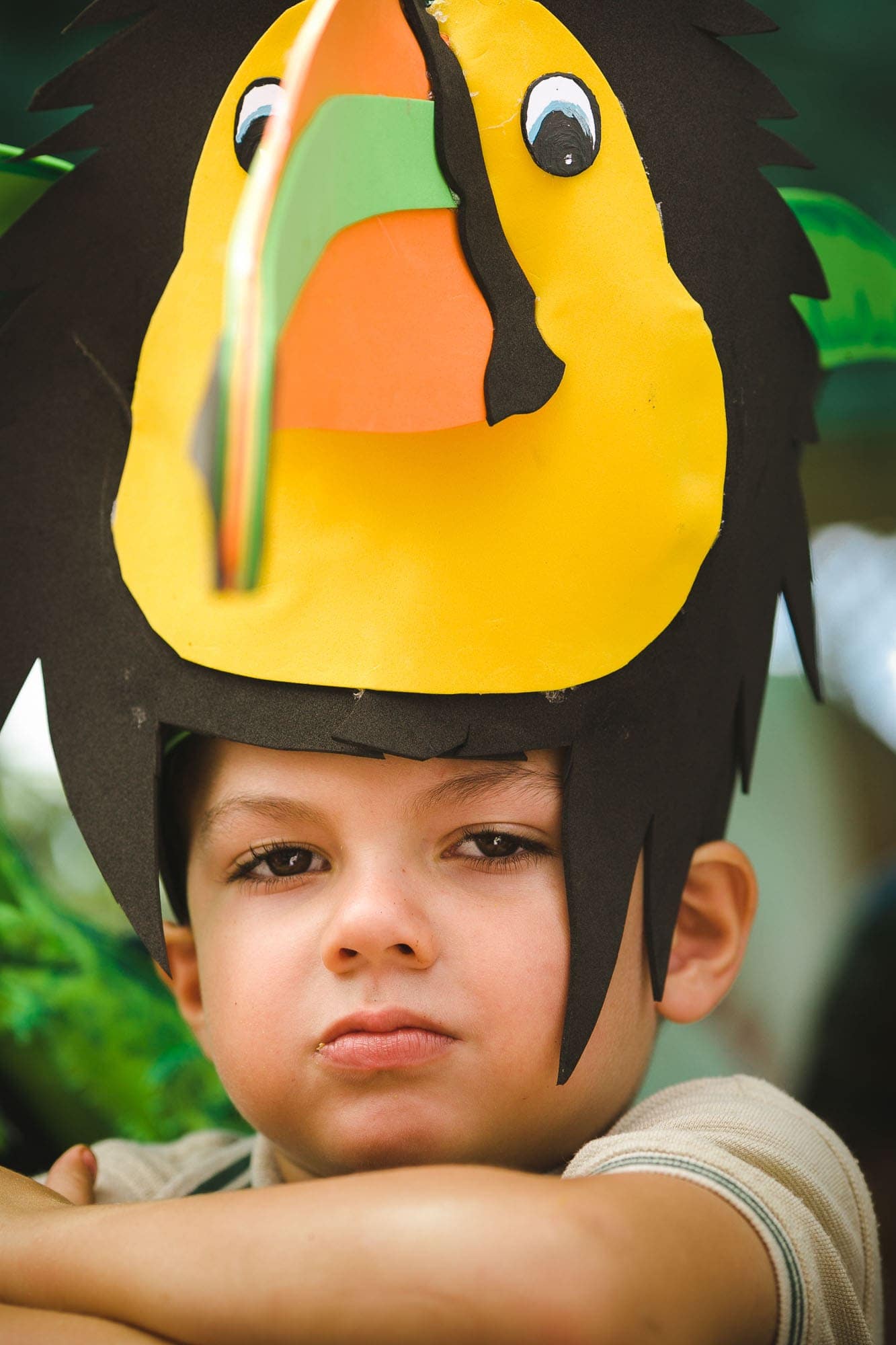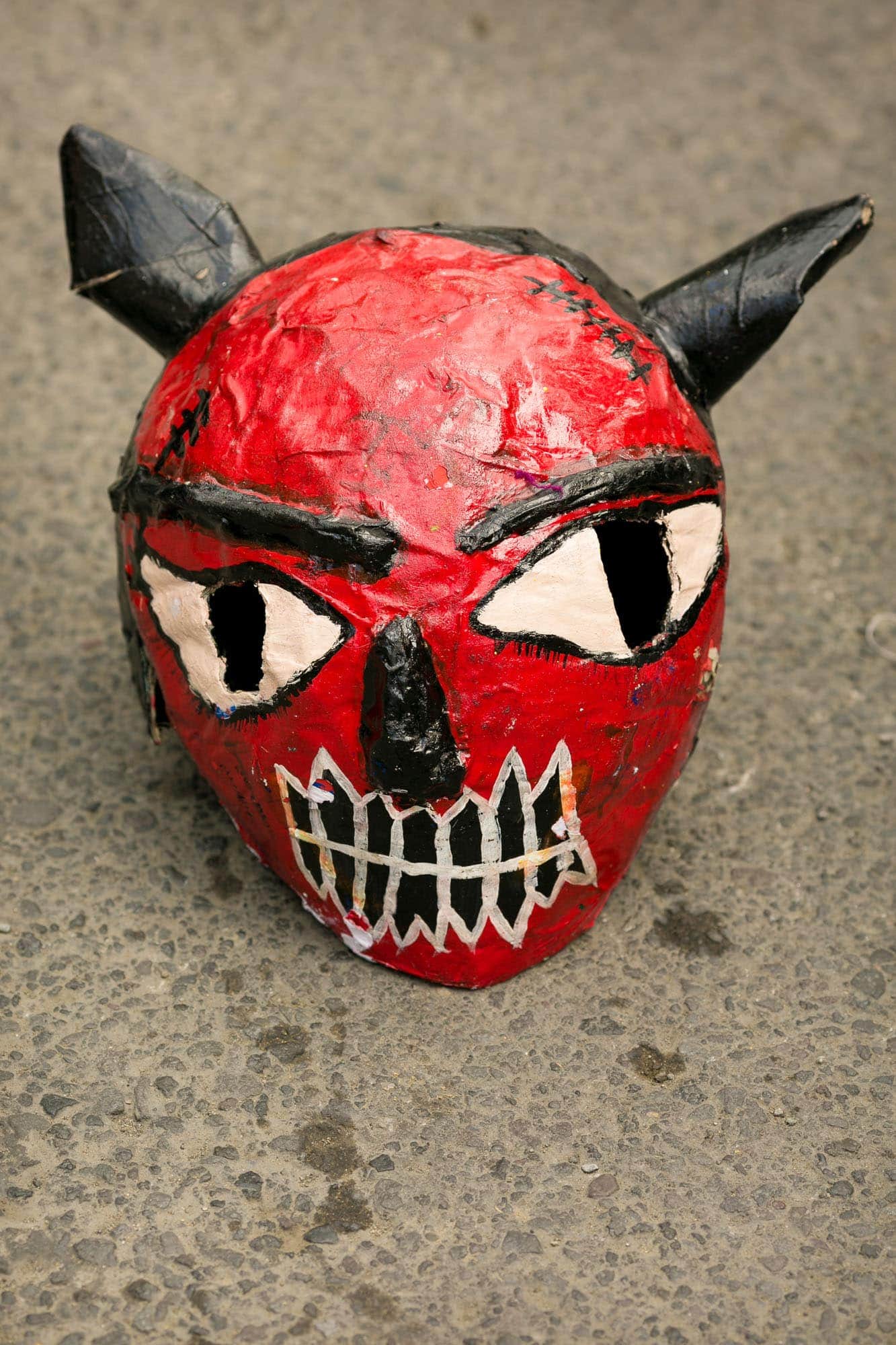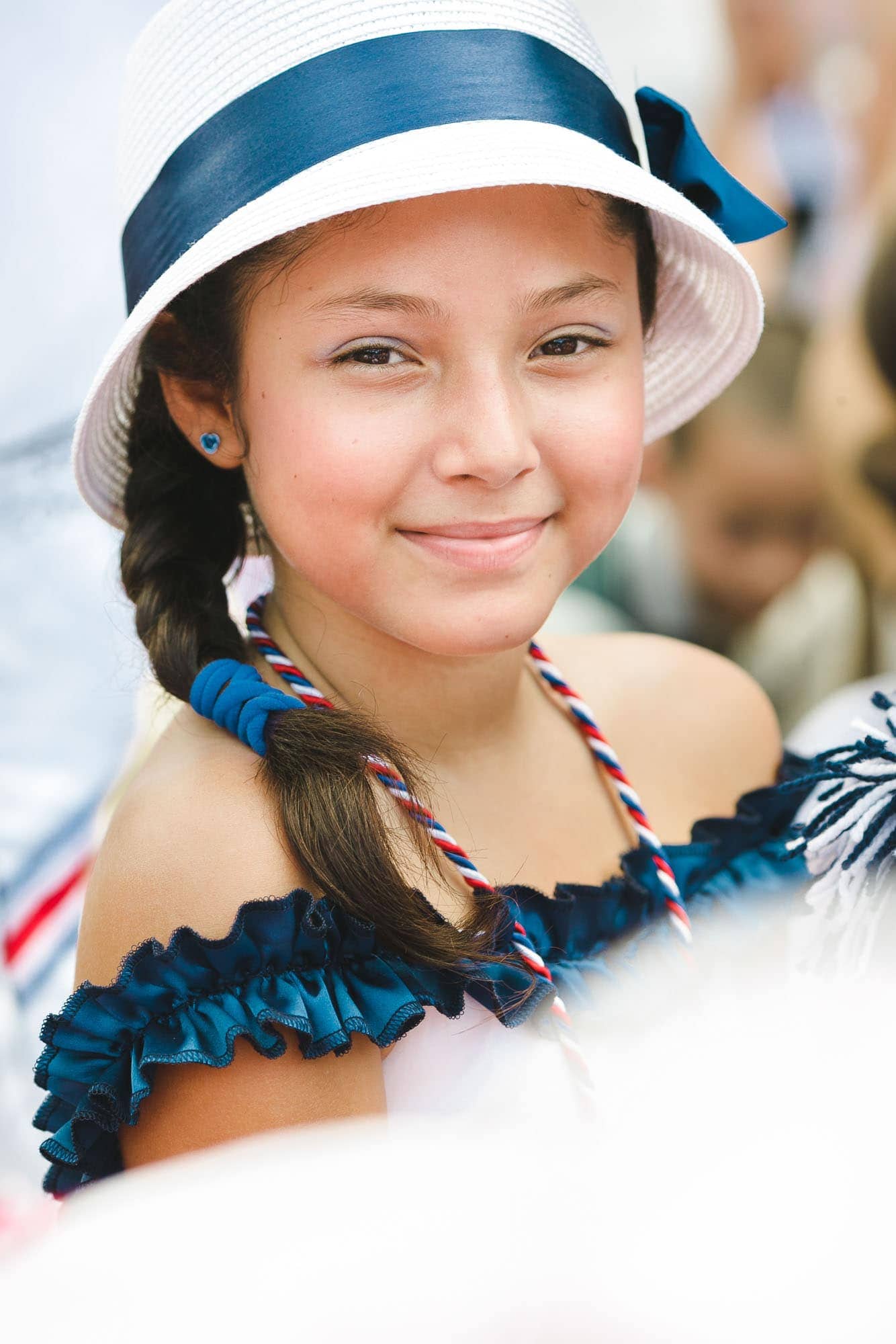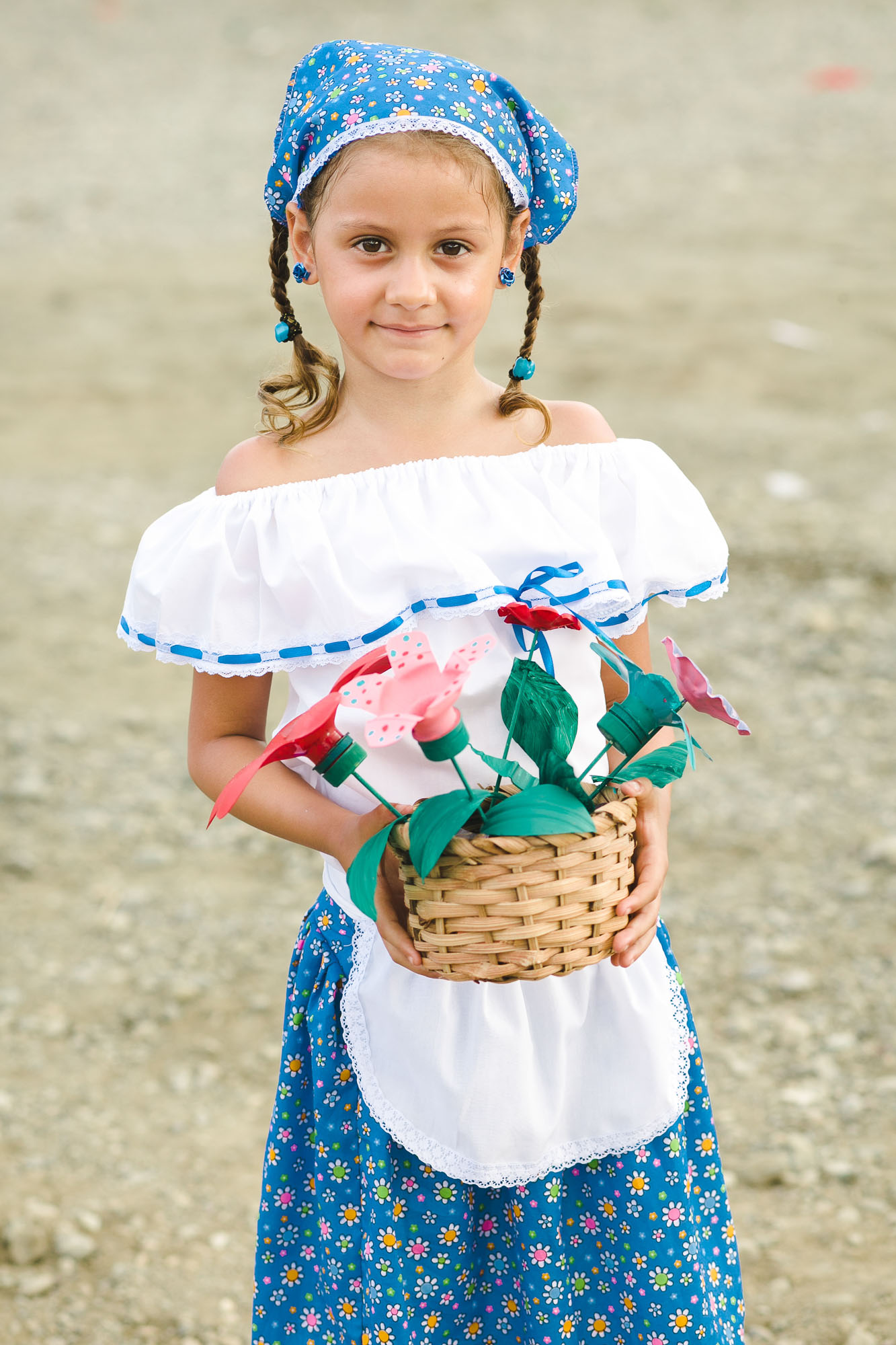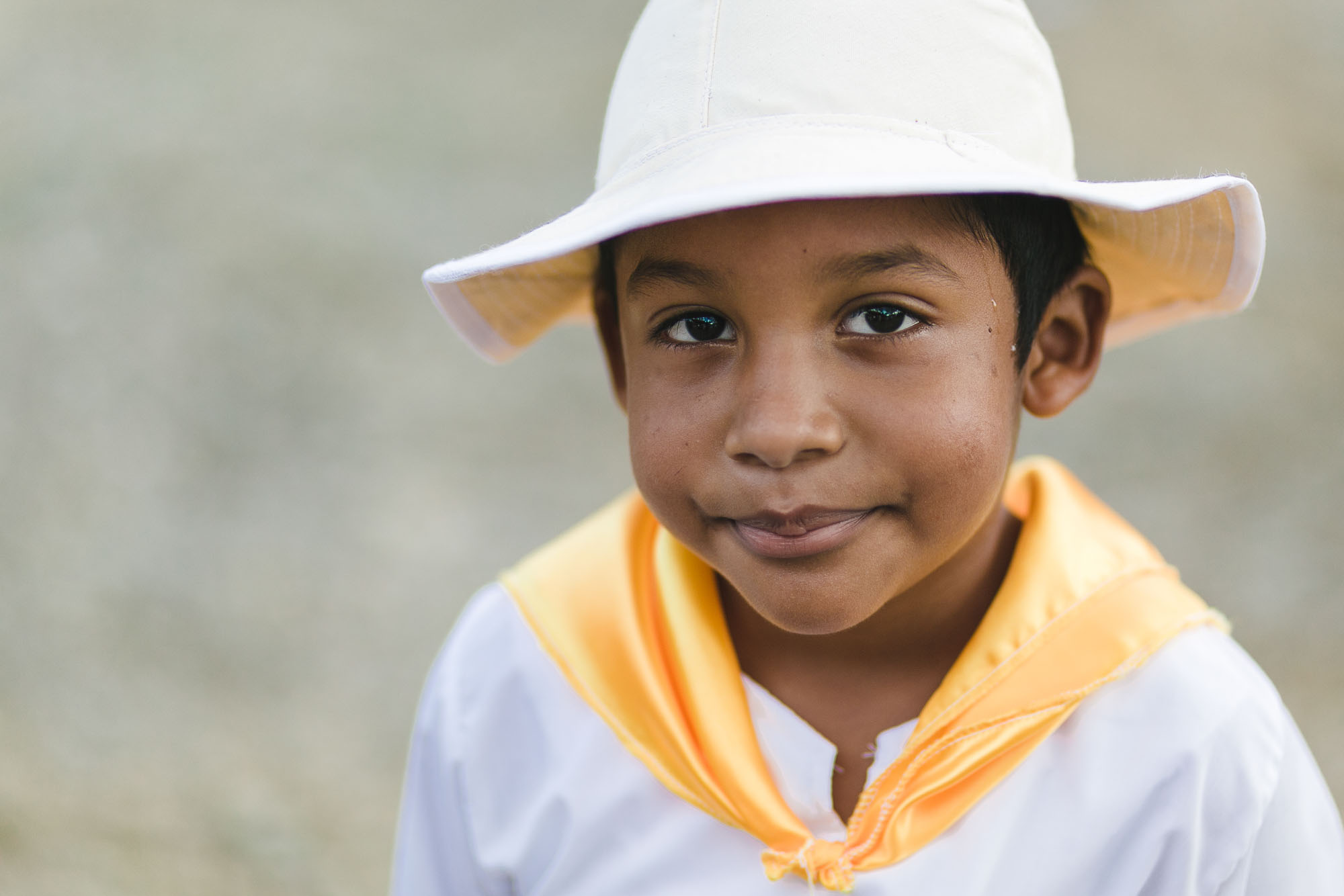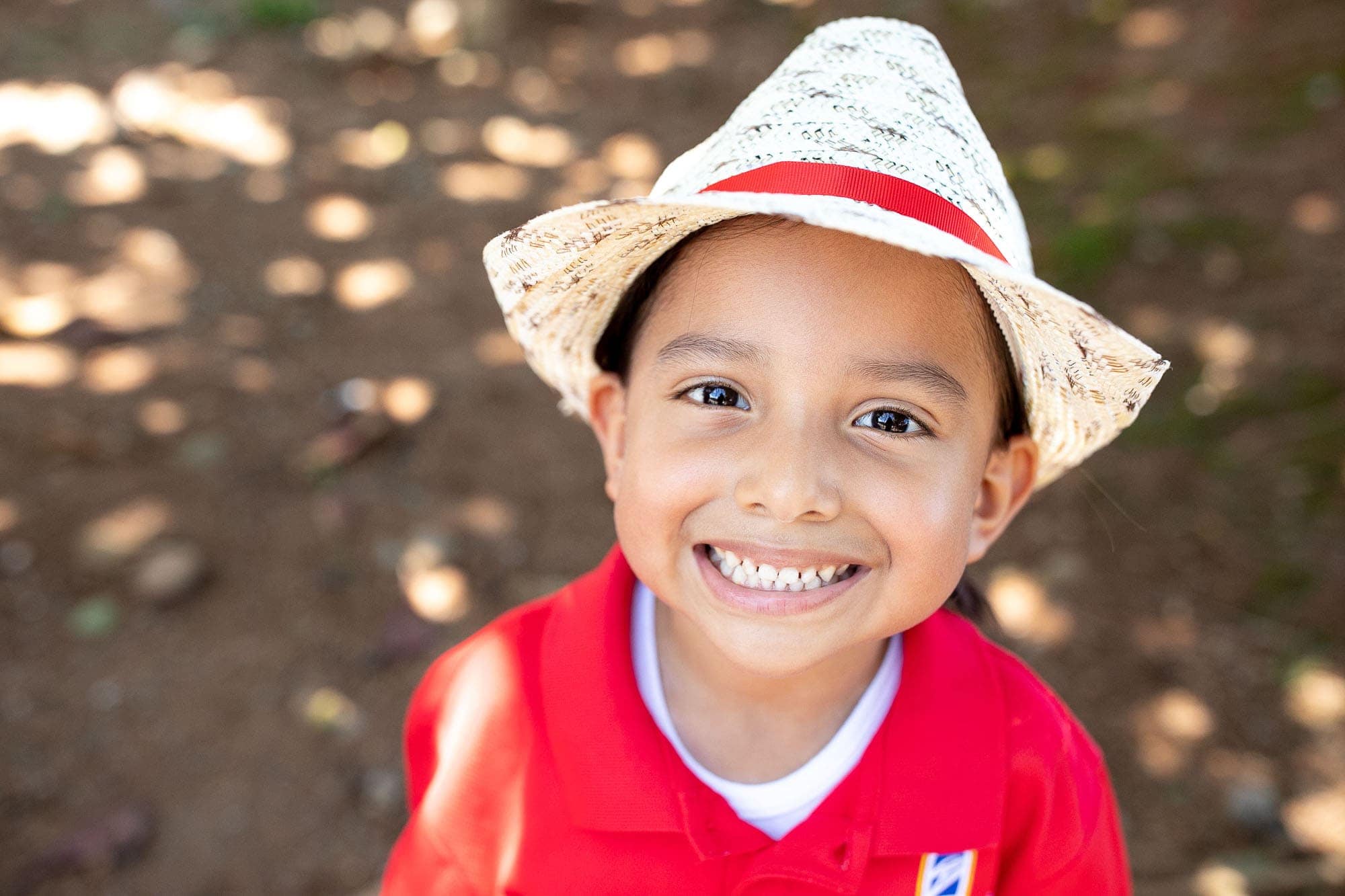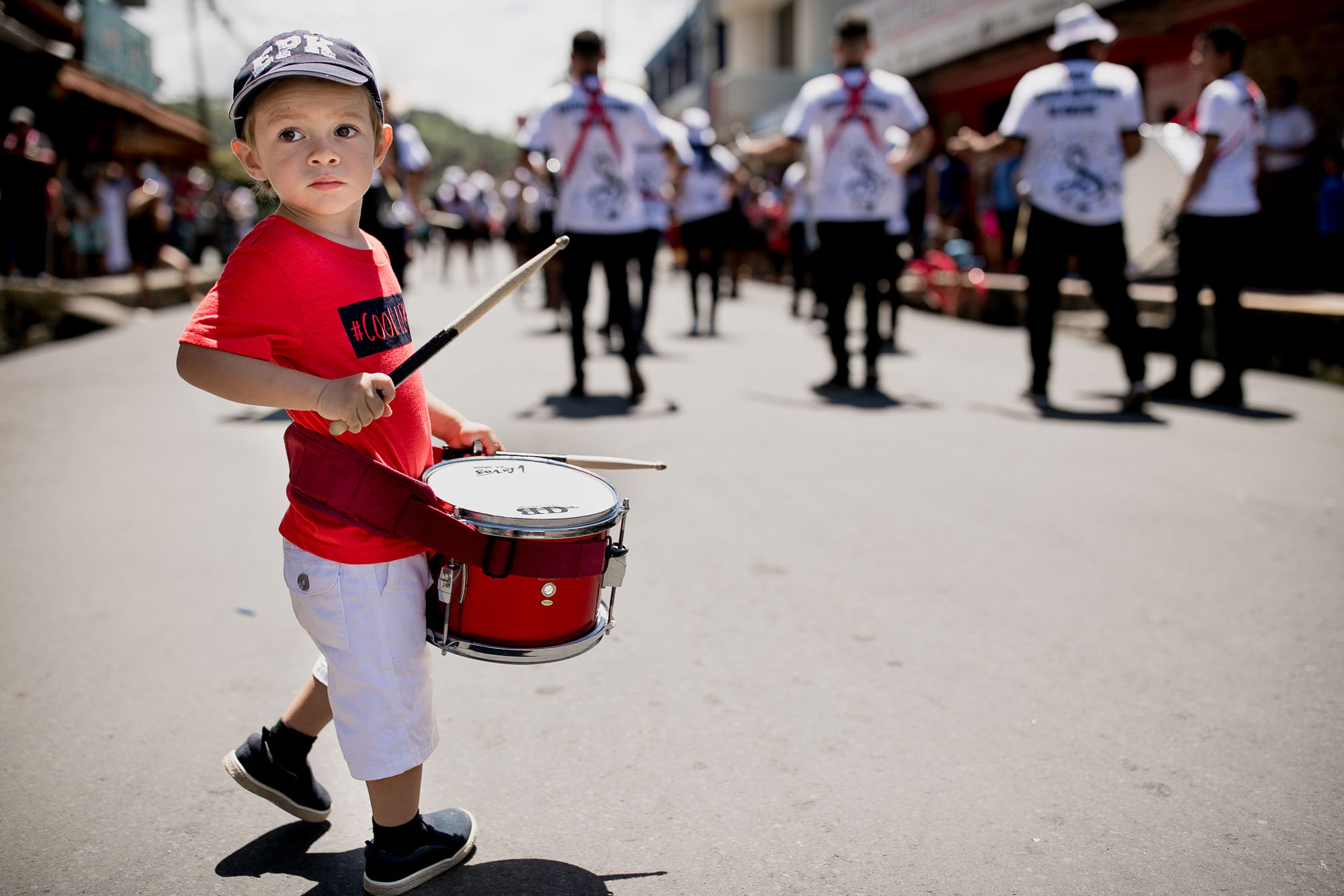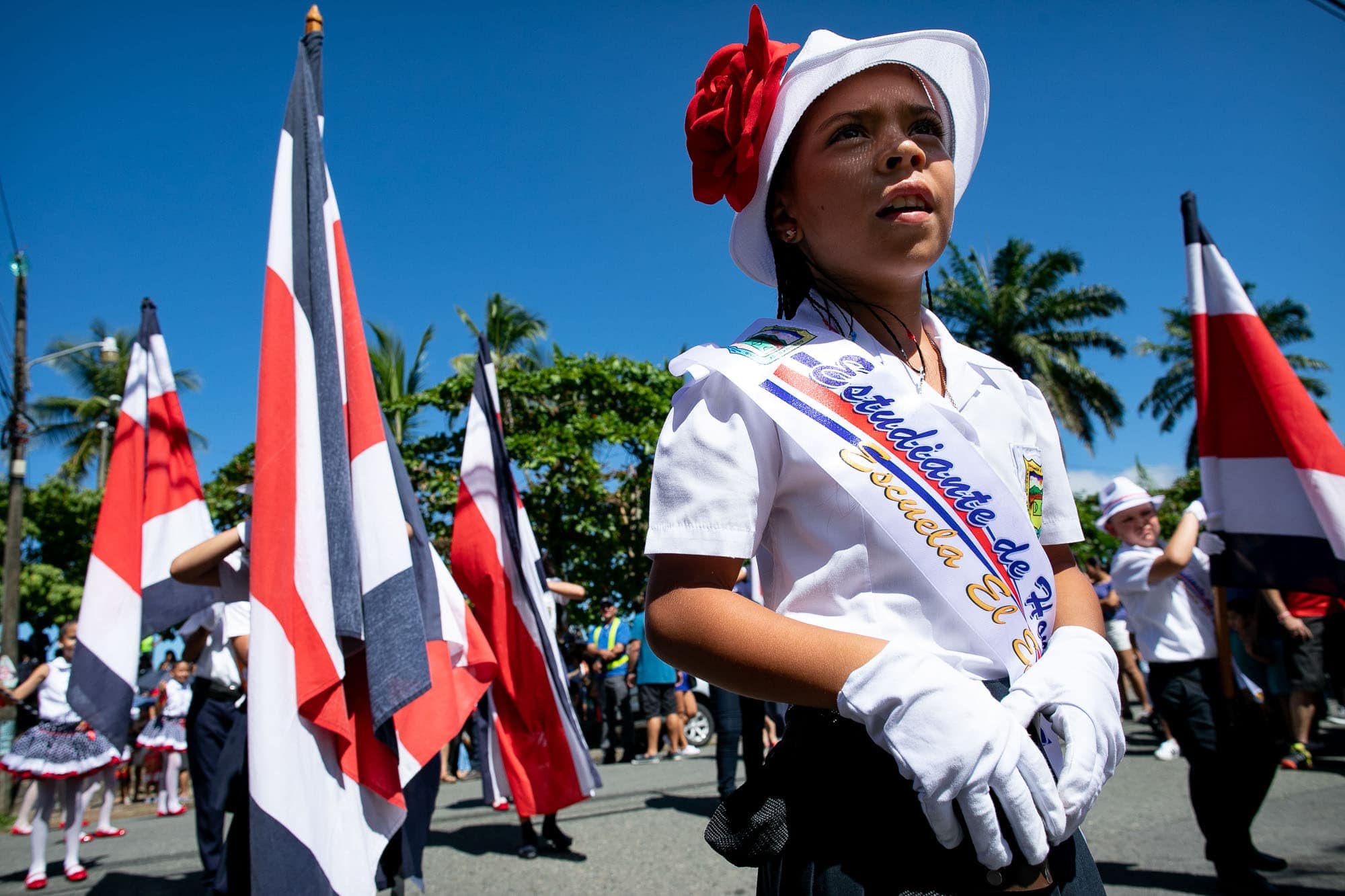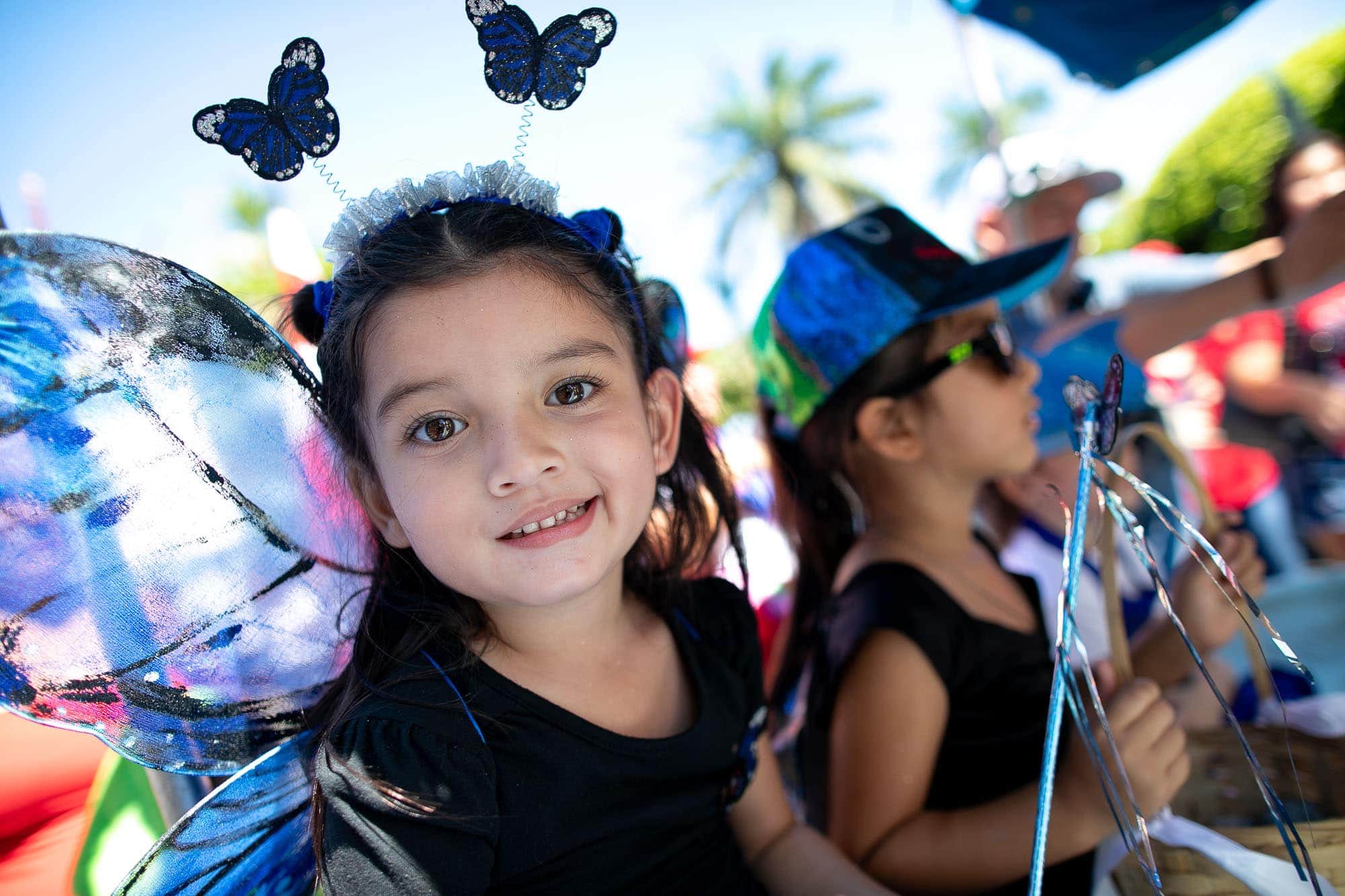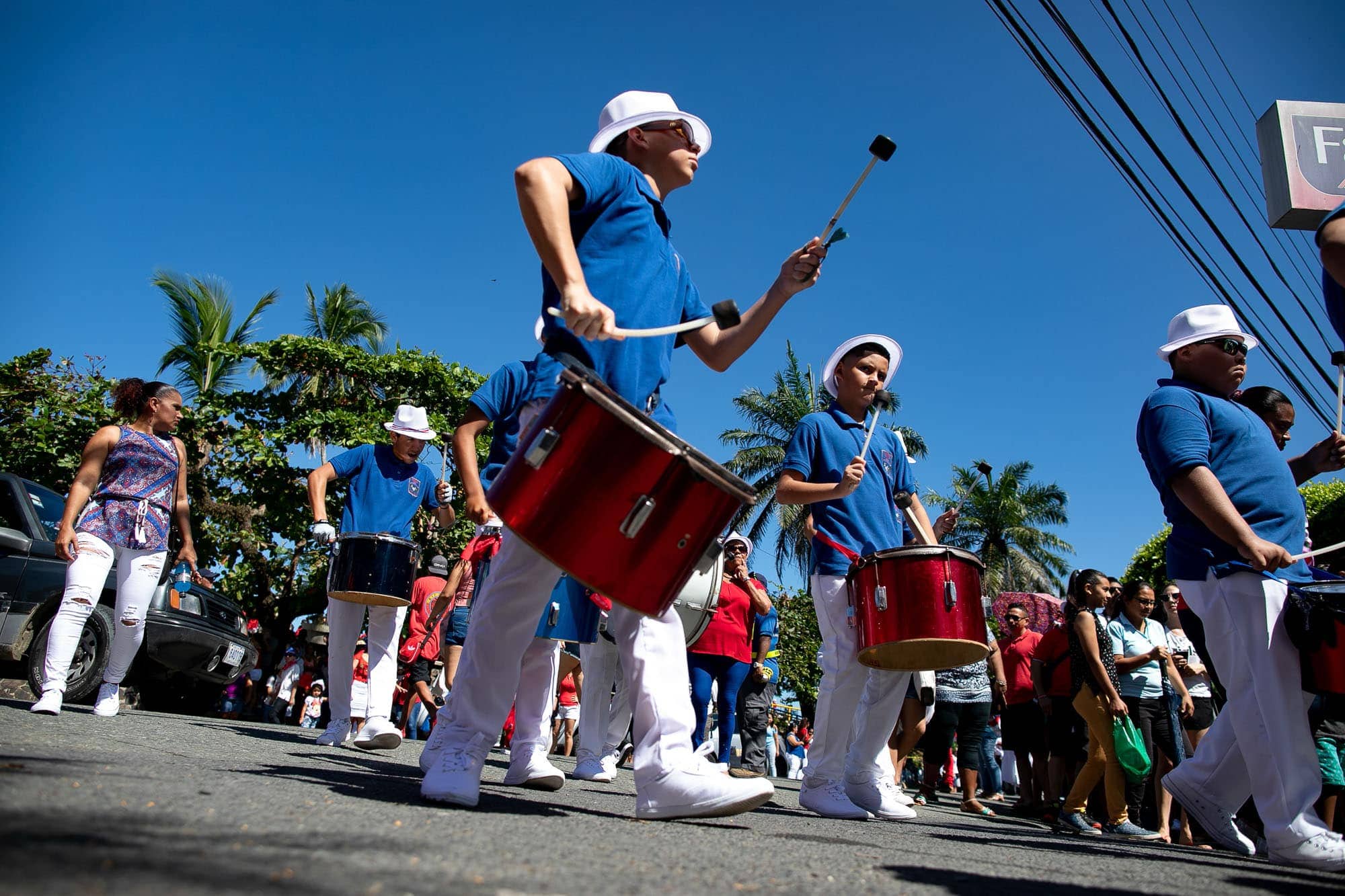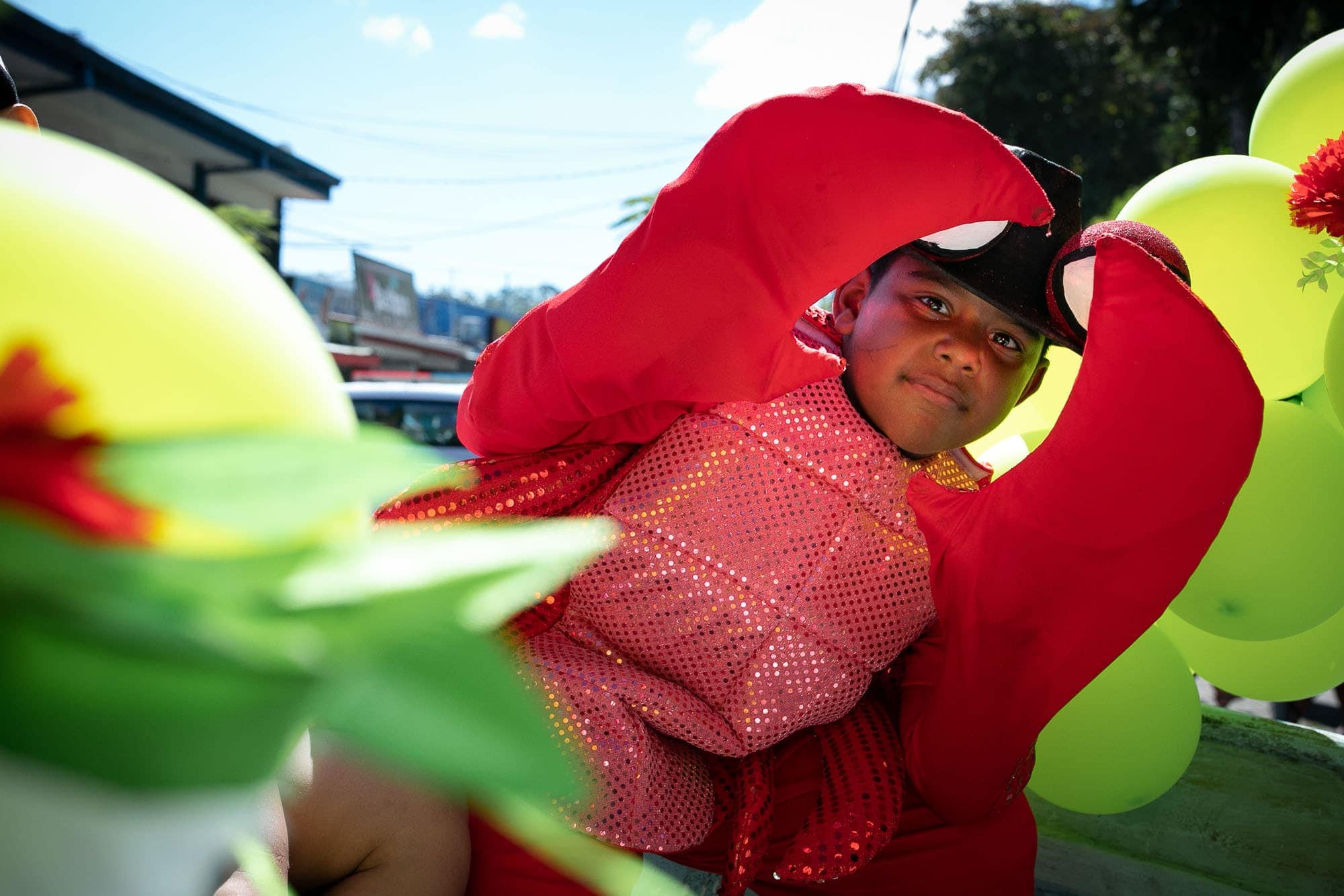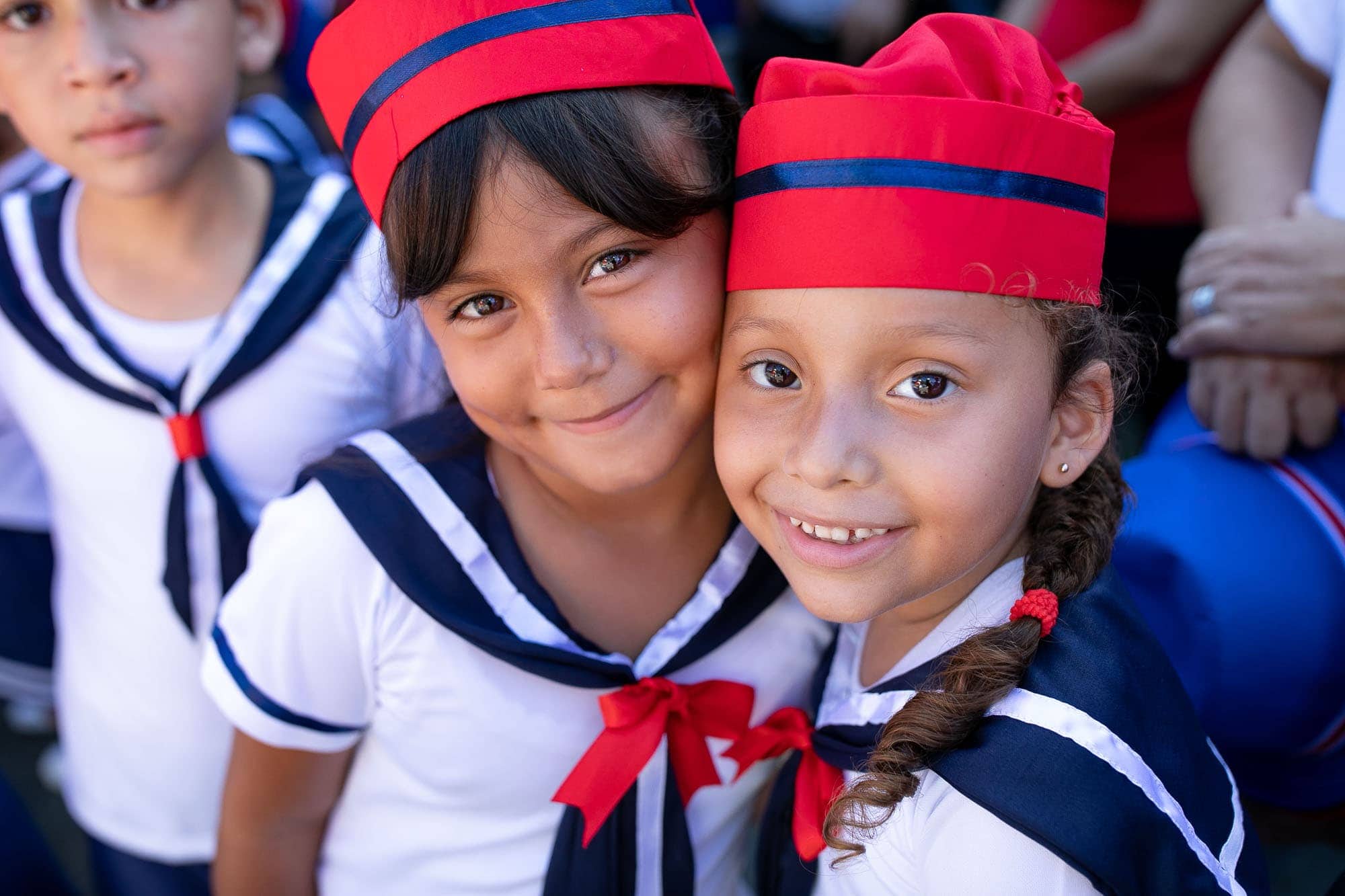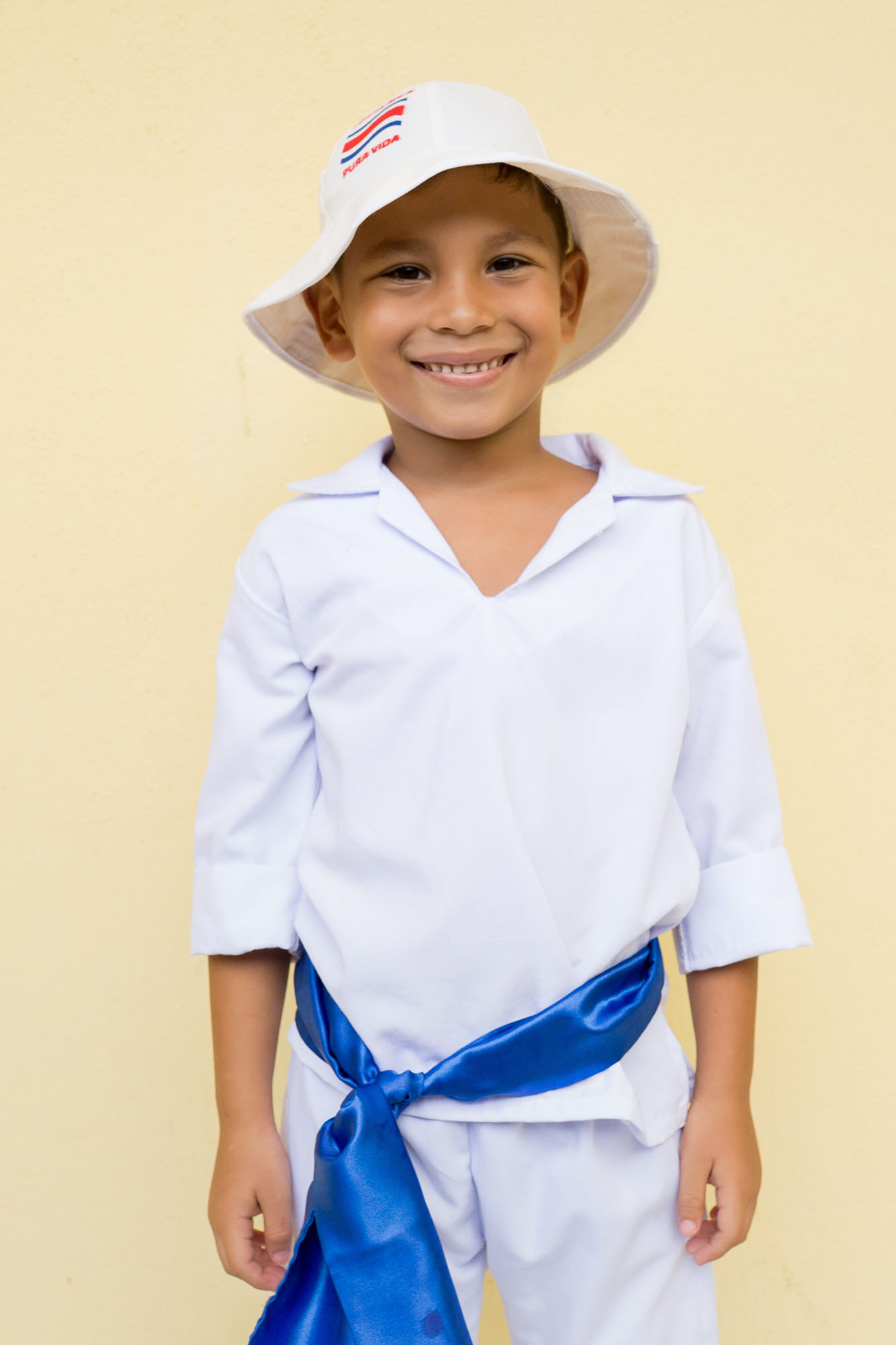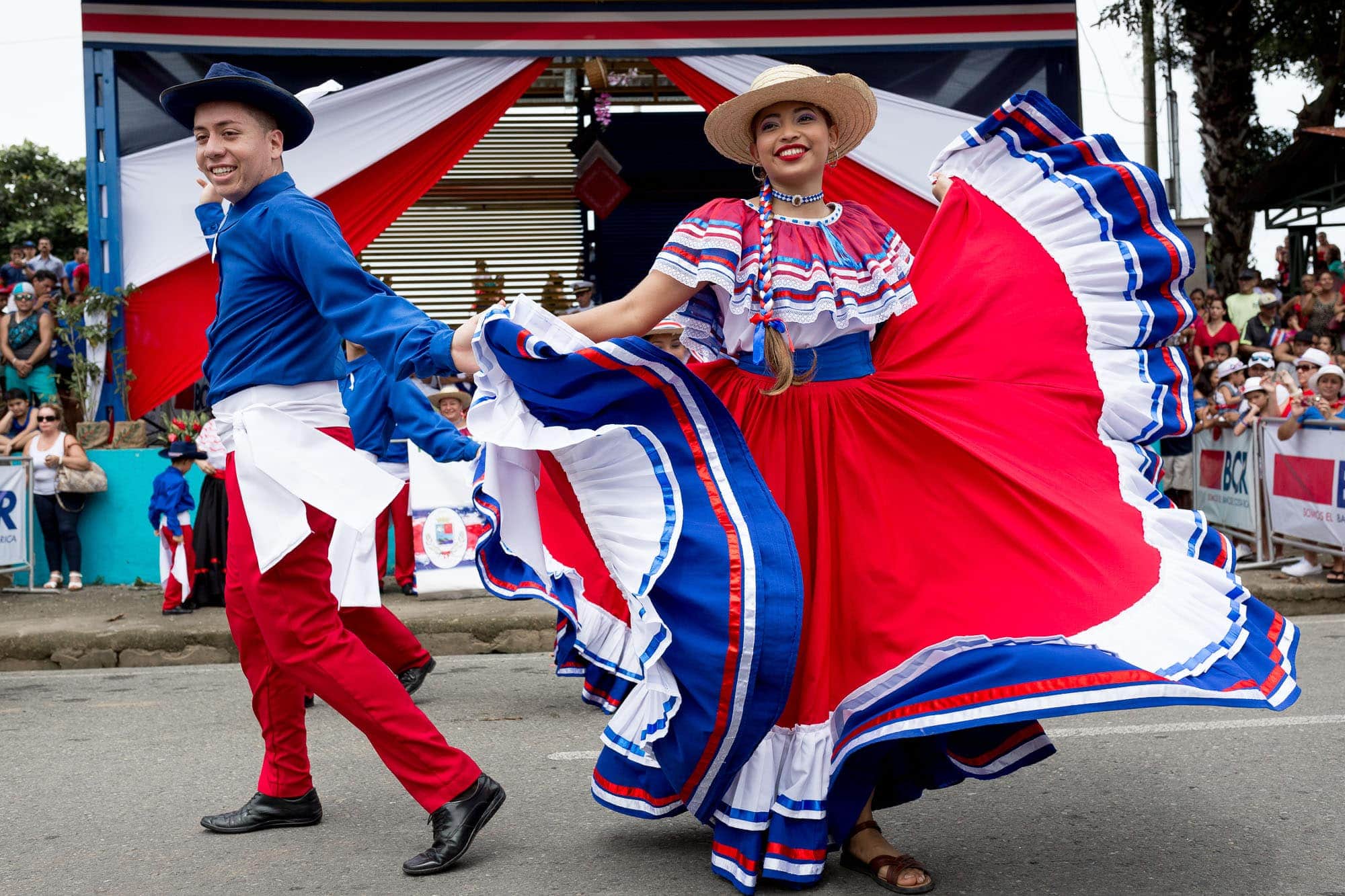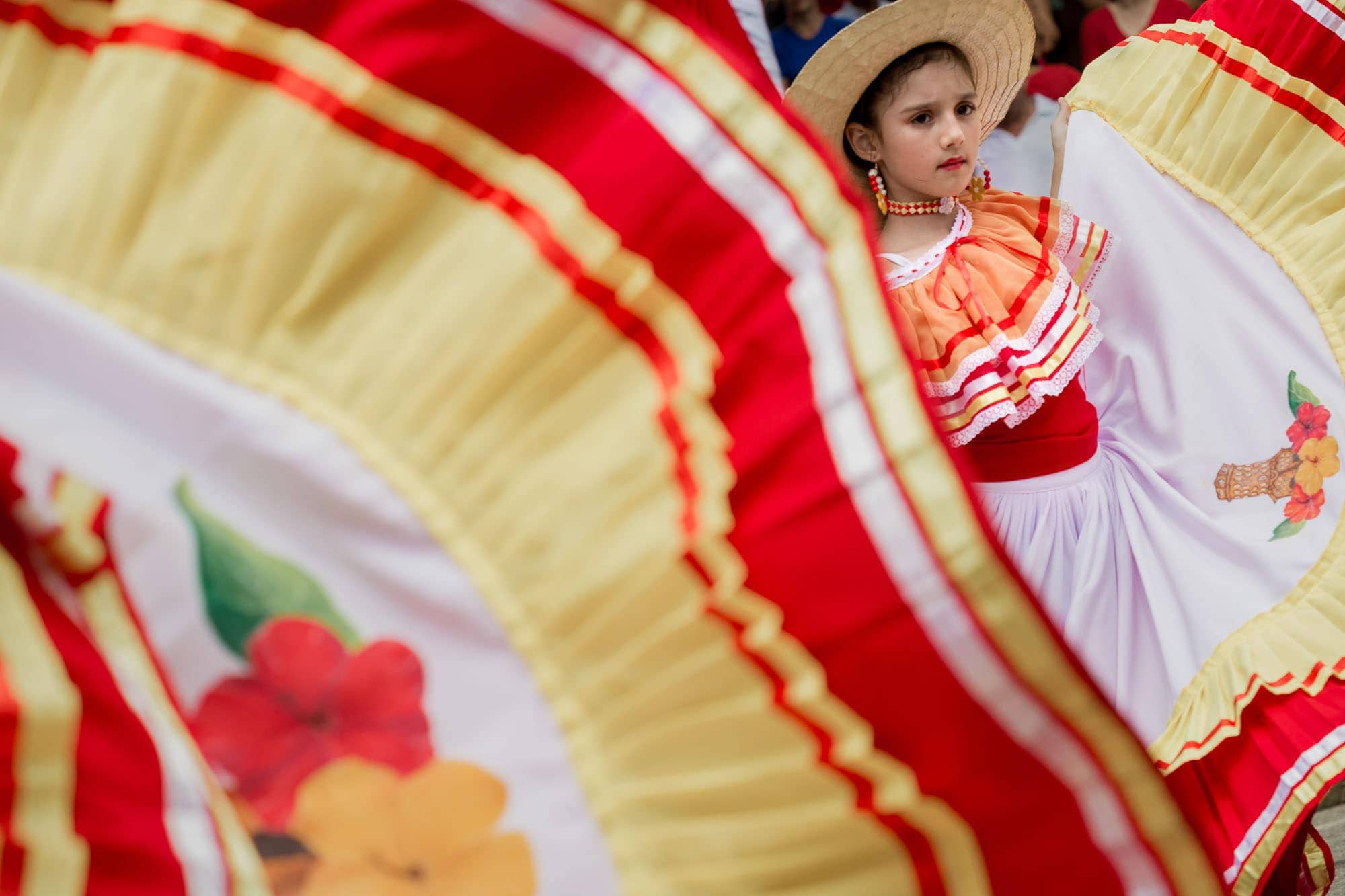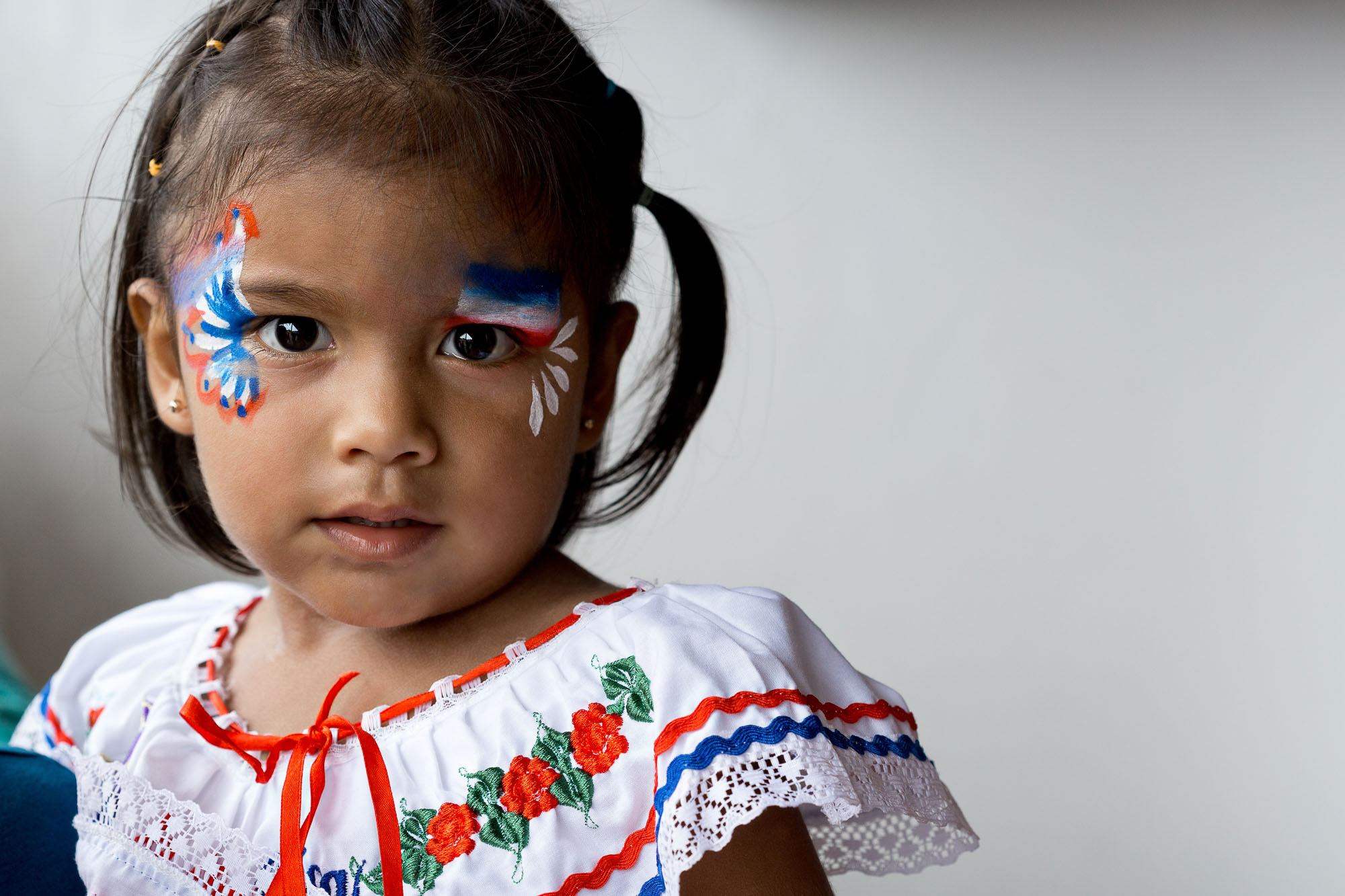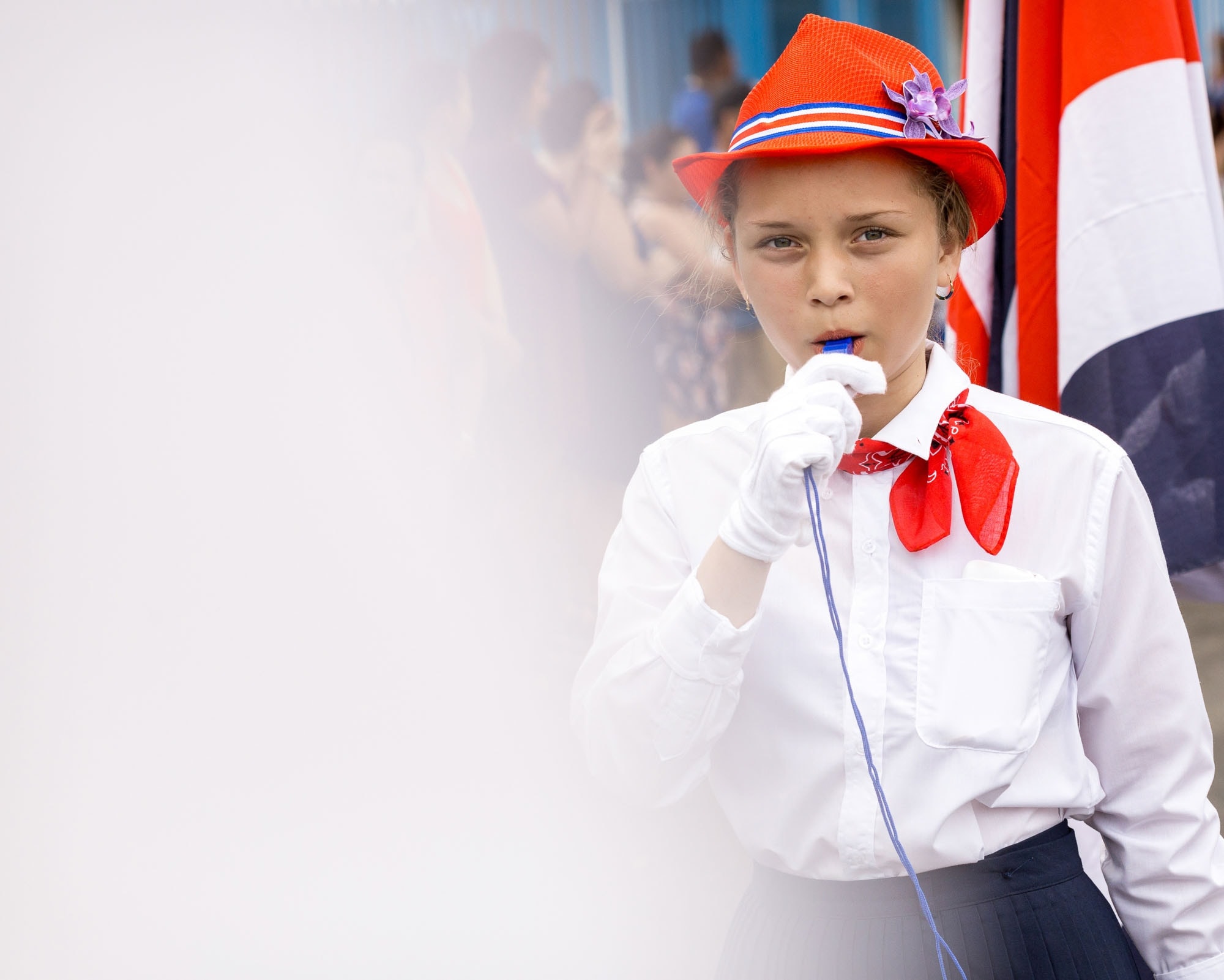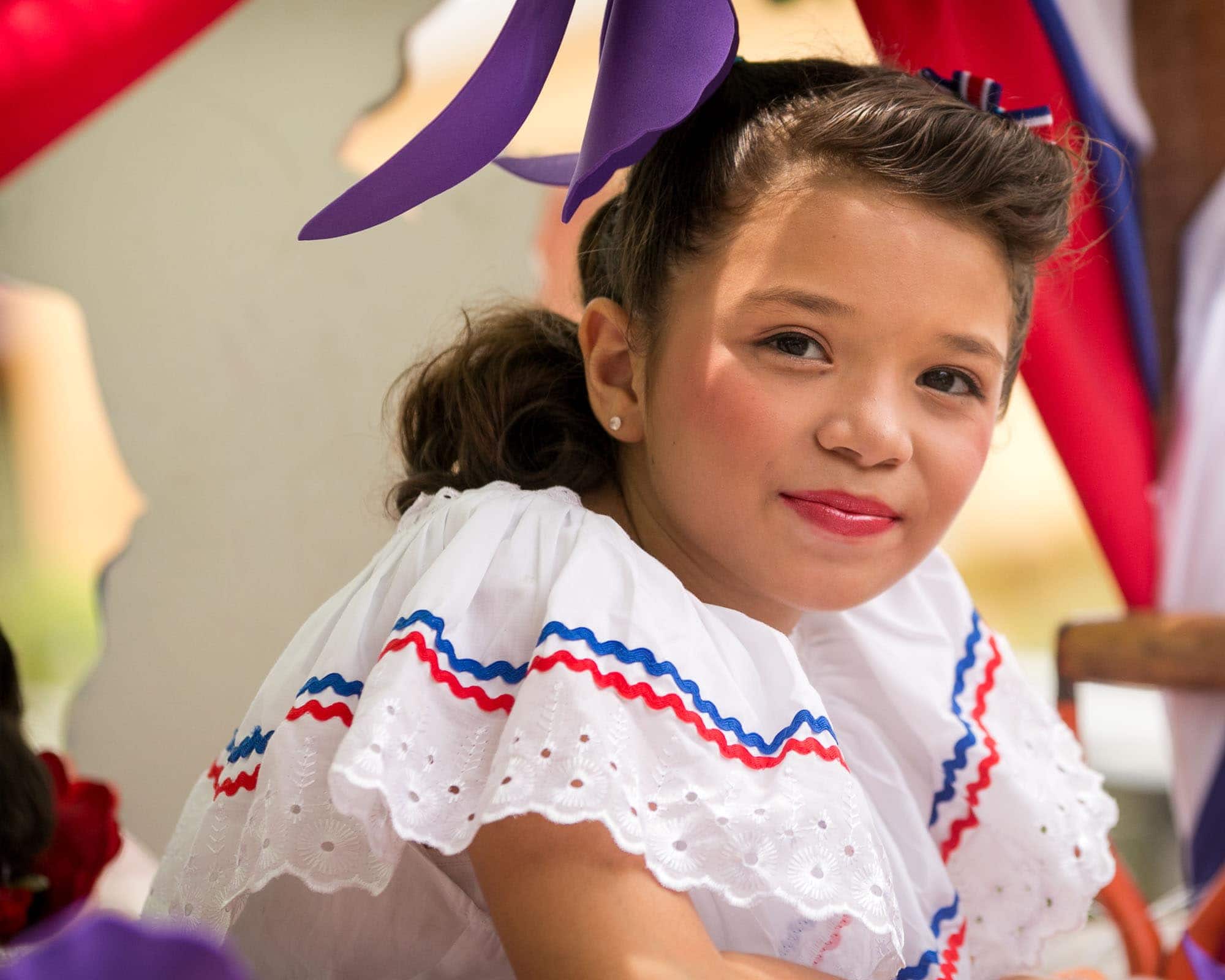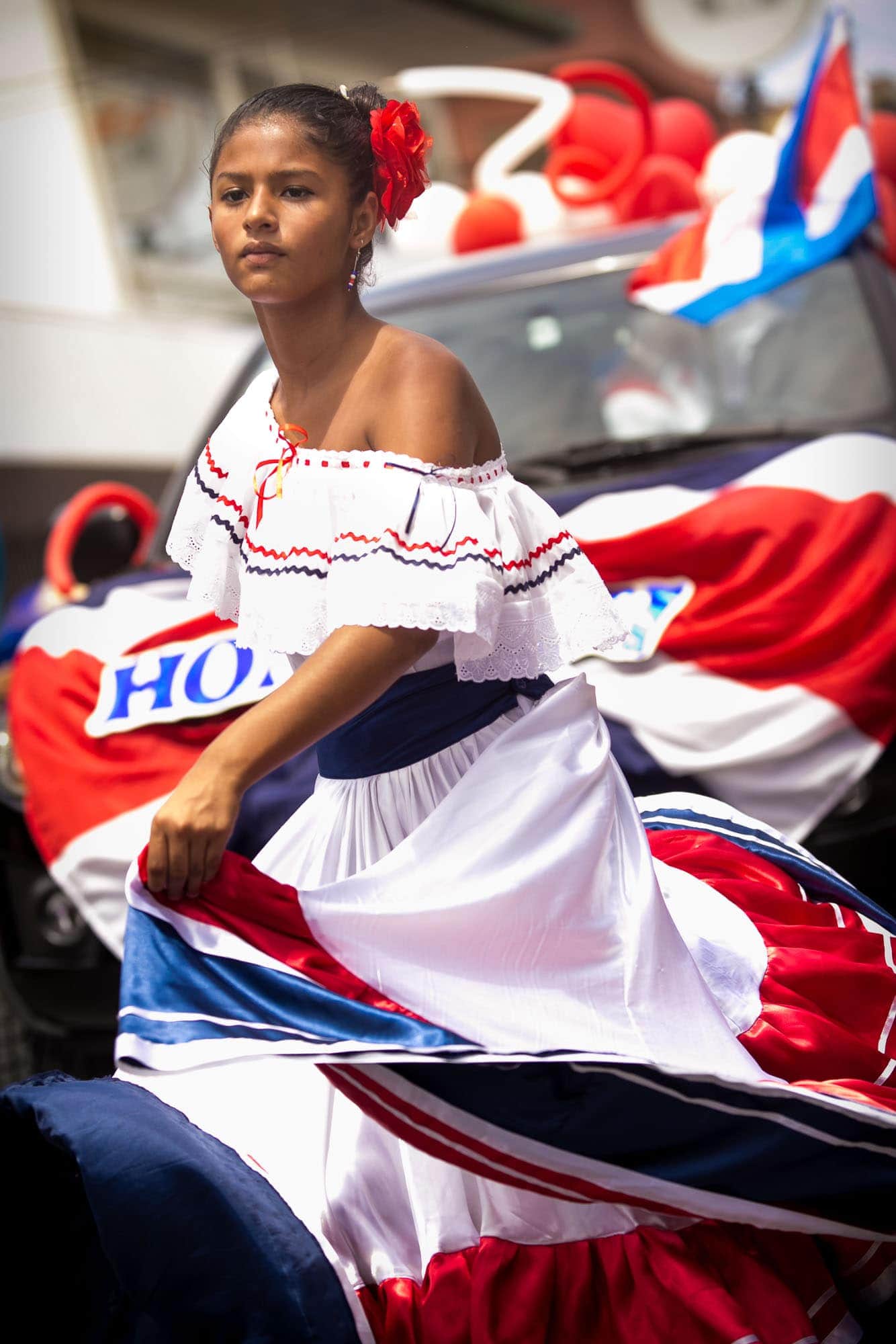Your Guide to Enjoying (and Surviving) Independence Day in Costa Rica in 2022
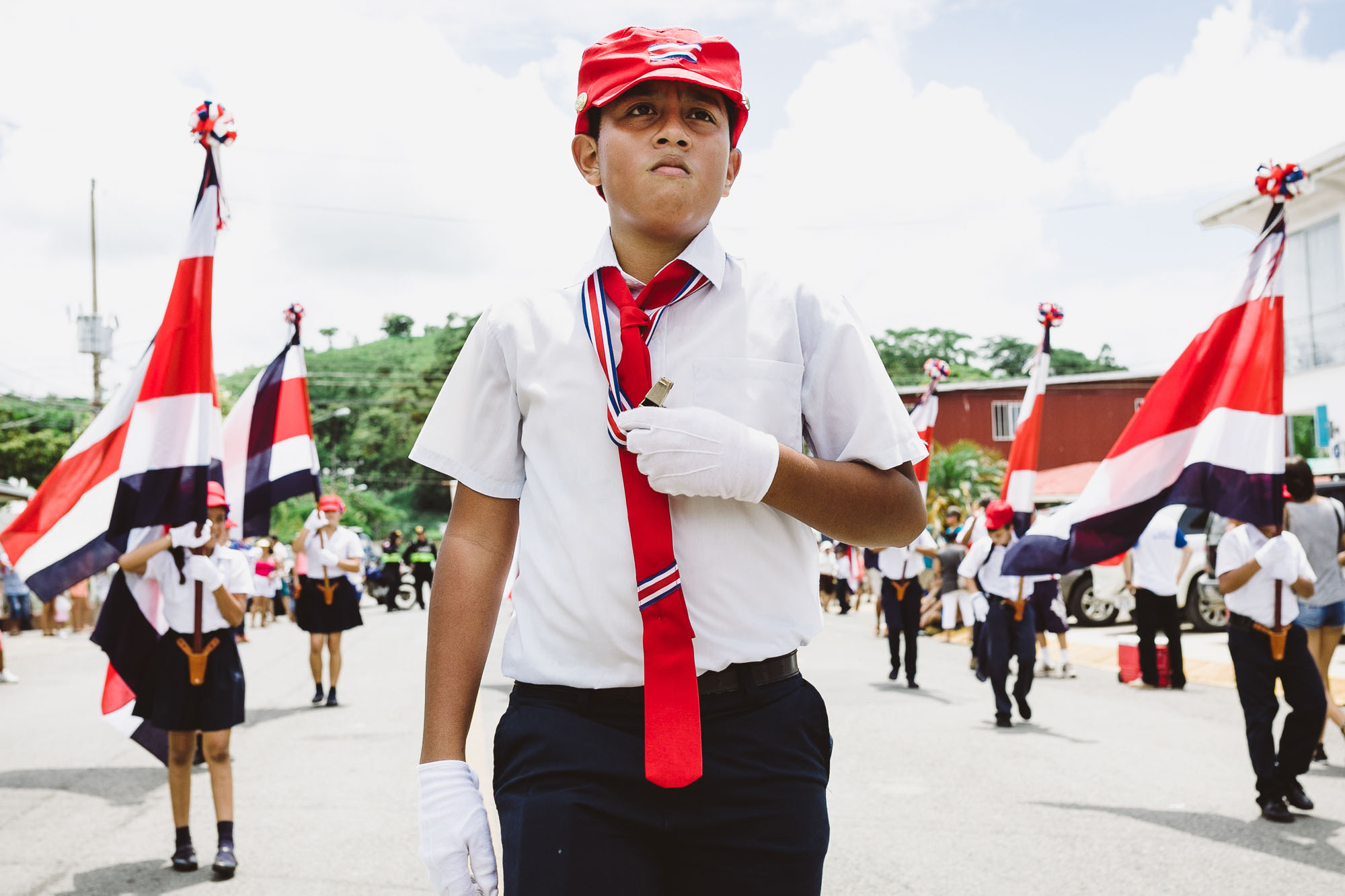
Independence Day in Costa Rica is a big deal. Costa Ricans, in general, love a good reason to celebrate. Apparently the whole country agrees that Central American independence is a great reason to celebrate because itś one of the biggest celebrations of the year.
The atmosphere is charged for weeks before as people prepare for the festivities. You’ll hear musical refrains played by traditional instruments coming from all the neighborhoods as the players for the marching bands prepare. Dance groups are getting ready to perform traditional Costa Rican dances. And, of course, all the stores are taking advantage of a great reason to have a big sale!
If you’re planning to visit during Independence Day in Costa Rica, you might be wondering what to expect or how to prepare for the festivities. Read on to find out!
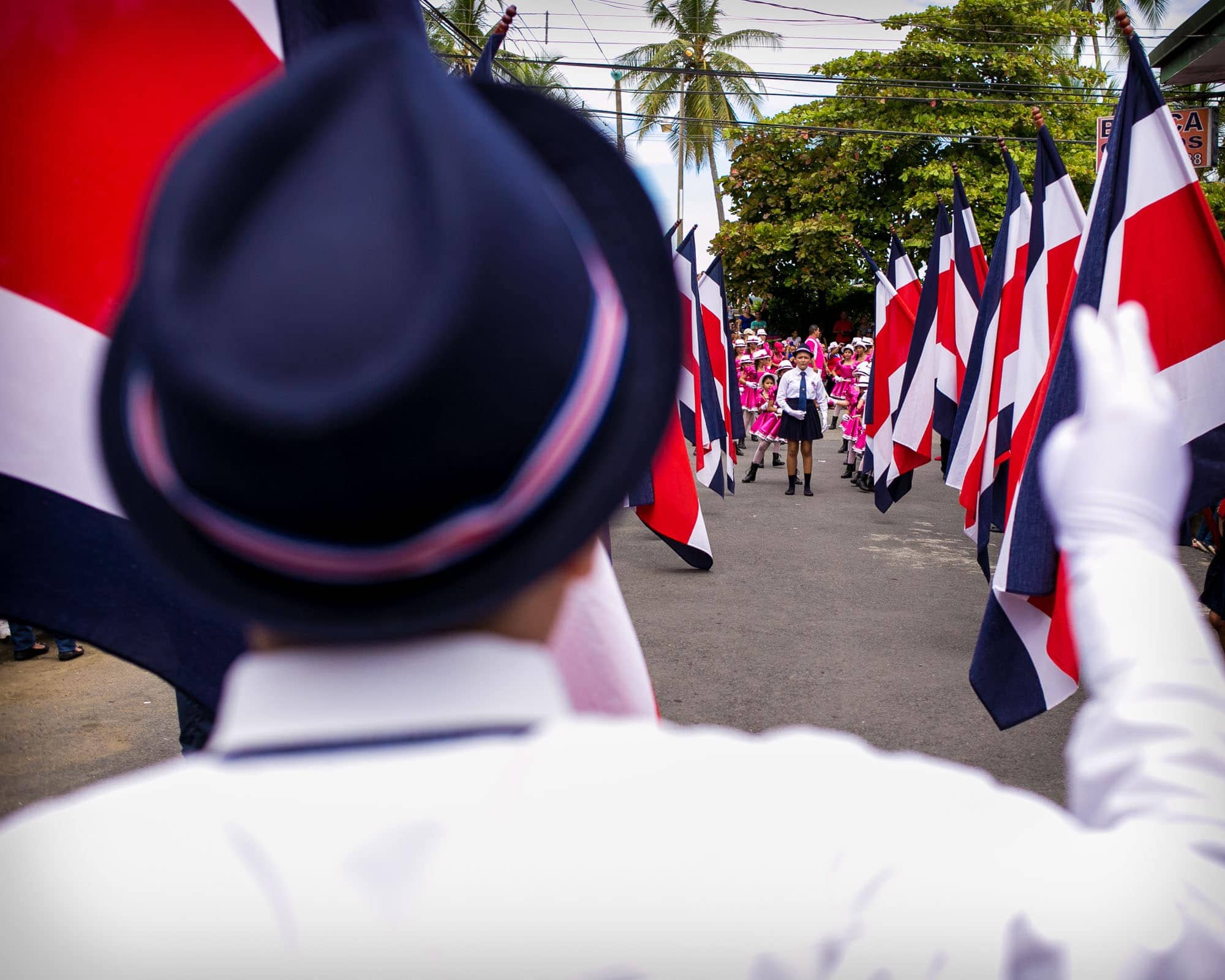
A Quick History of Independence Day in Costa Rica
First, let’s do a mini-history lesson. Costa Rica shares its independence day with the other countries of Central America. On September 15, 1821, the Central American countries declared themselves independent from Spain.
News didn’t travel as fast back then as it does today so Costa Rica didn’t find out the good news until well into October. The country held its first elections in December 1821 and elected Juan Mora Fernández to be the first Chief of State.
Now, nearly 200 years later, people still get quite excited. In fact, the whole month of September is dubbed “Mes de La Patria” or “Month of the Homeland” and people are enthusiastically preparing for the big day for weeks beforehand.
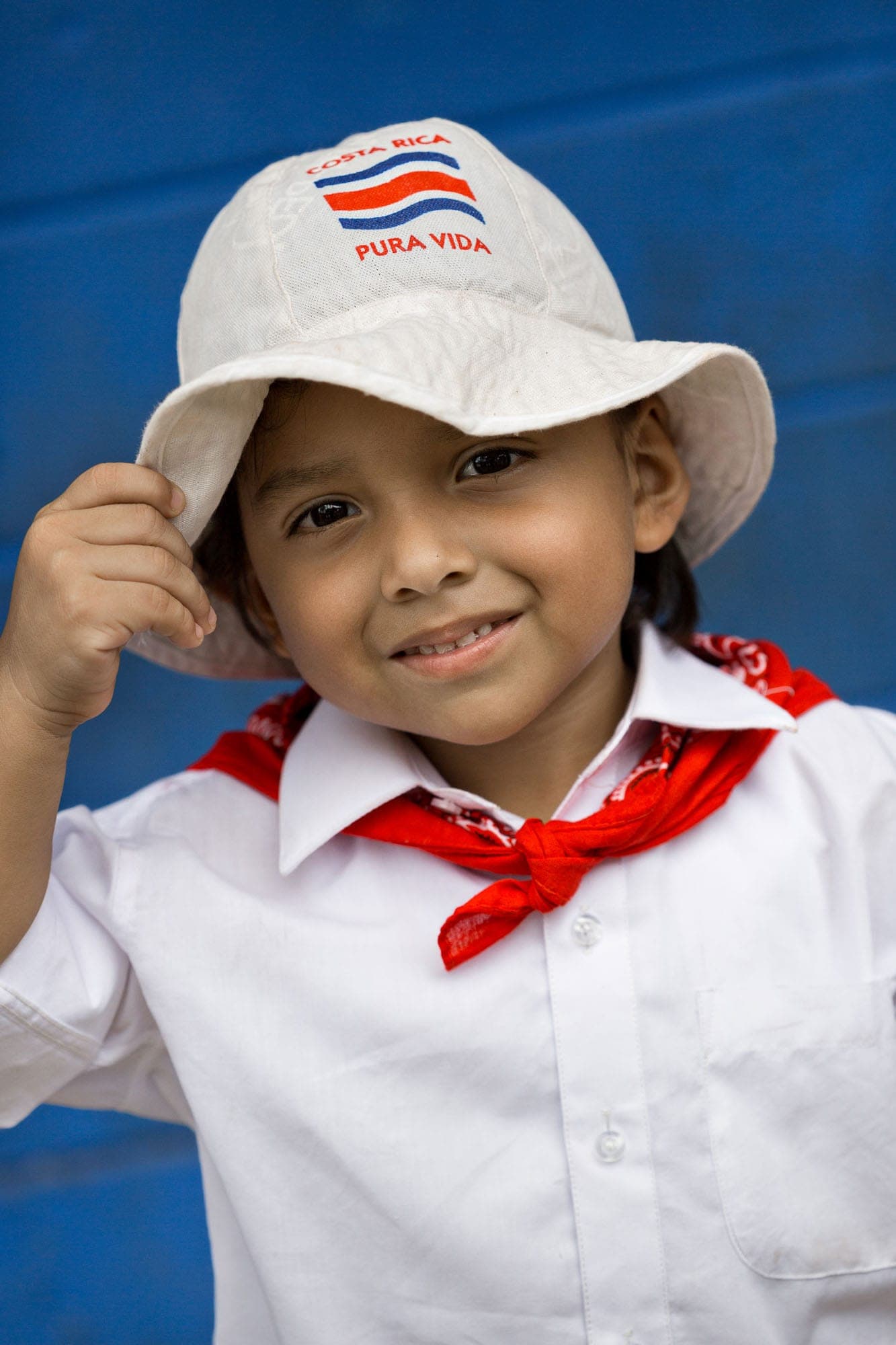
The Torch
Central American independence was actually declared in Guatemala on September 15th. We already mentioned that Costa Rica didn’t even find out until about a month later.
To commemorate the spread of the news, every year a “freedom torch” is lit in Guatemala on September 9th. Then, different runners take up the torch for their leg of the journey until it reaches its destination in Cartago, Costa Rica — what used to be Costa Rica’s capital city.
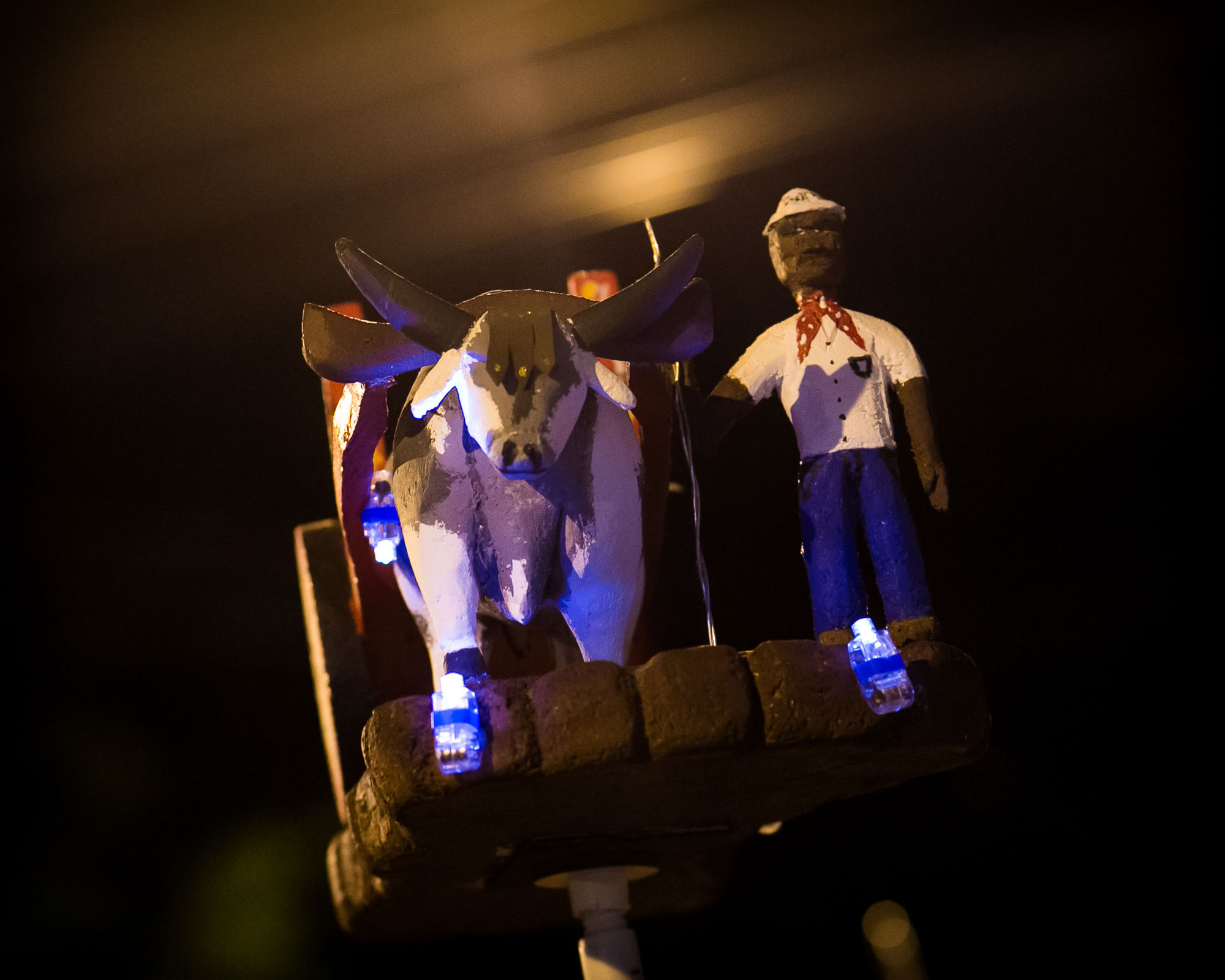
The Faroles
While many people gather to cheer on the runners, the main festivities begin on the evening of September 14th. At 6 pm the national anthem is played on TV and radio stations all across the country and the entire nation takes a moment to join together in song.
Afterward, the parade of the faroles begins. School children march through town carrying their lanterns or faroles. These represent the anxious crowd of people standing outside in the dark, waiting to hear that independence had been declared.
Traditionally, school kids made the faroles from paper and whatever other materials they could think of to be creative with. Now many people buy their faroles instead and they have become quite elaborate.
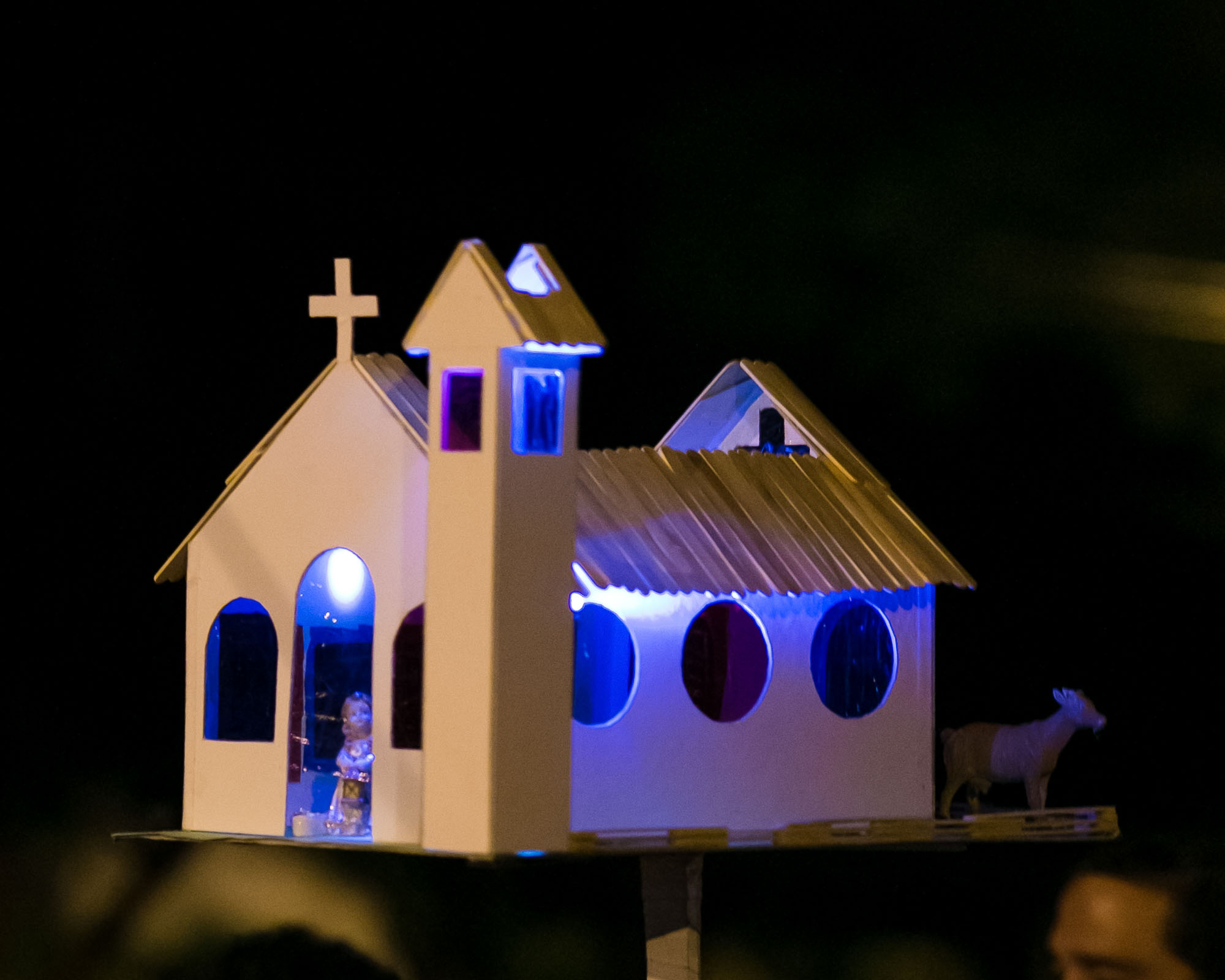
The Mascaradas
Halloween is not necessarily a widely-celebrated holiday in Costa Rica. However, the Costa Ricans do have a tradition adapted from Spain’s Carnival that involves people dressing up in giant puppet heads. It was beginning to fade away until 1996 when the government declared October 31st, el Dia de la Mascarada Tradicional Costarricense.
Skilled artisans spend months crafting giant puppets from newspapers, clay molds, and glue. The elaborate faces usually represent characters from Costa Rican folklore and wear outrageous (slightly frightening) expressions.
They go on parade with the Cimarronas, “wild” musicians who play loud, chaotic music. They dance in the streets, pound on drums, and do little performances.
Oh, and they chase people around too. It’s a chaotic, fun time.
Why do I mention this tradition? Because many of the masked heads make an appearance during Independence Day celebrations as well. They haven’t been as popular in Quepos in years past, but recently the local high school kids have started doing it.
Nearly everyone turns out to celebrate on September 15th. People gather in city (and town) centers across Costa Rica to enjoy the main e. The center of Quepos itself isn’t very large, but there are a lot of villages in the surrounding area that belong to the municipality.
In other words, it’s usually packed.
But it’s so fun! The atmosphere is charged with excitement. People are happy and excited and a lot of folks know each other so you’ll see a lot of people enthusiastically greeting one another.
Ready to find out a little about the parade and how to prepare for it? Read on!
The kids are a huge part of the parade. Most schools have groups that march. They dress the little kids up super cute and have them walk along, maybe holding a sign or a flag. Bigger kids will perform in marching bands or dance groups.
The instruments mostly consist of various types of drums, liras, which are kind of like portable xylophones, and güiros, which is a metallic shaker/percussion instrument. Some bands will have a brass section.
Folk dancing groups are also common. The ladies wear long voluminous skirts that they wave around as part of the dance. The guys wear loose shirts and trousers and a wide-brimmed hat. They also tie handkerchiefs around their necks and usually carry one in each hand that they wave around to mirror the ladies.
You’ll also see civic groups like the firefighters and the Coast Guard take part in the parade.
If you’re from the U.S., Costa Rica’s independence day colors will feel familiar as they are also red, white, and blue. However, the style of dress is a little different.
From coffee to cacao to pineapples and other tropical fruit, Costa Rican farmers grow a lot of deliciousness in the countryside. In fact, agriculture traditionally has been a big part of Costa Rican life. Of course, with technology things are changing, as they are everywhere and more people work in the cities.
But on Independence Day you’ll see a nod to the campesino or the country way of life in the way people dress. They wear button-down shirts, tie handkerchiefs around their necks and don wide-brimmed hats. Some even go for boots, although how they handle the heat in Quepos is beyond me.
All the while the overarching color scheme is red, white, and blue.
So, what should YOU wear to the parade?
First and foremost, choose loose, comfortable clothing. It’s gonna be HOT and there will be a lot of people crowding into the shady areas. If you’ve got red, white, or blue clothing, go ahead and wear it! If not, don’t worry, no one will be offended — everyone already knows you’re a tourist anyway.
The streets are closed off along the parade route, which is most of Quepos Center, so wear comfortable shoes because you may have to walk a fair distance. The parade participants do their main performances by the big stage in front of the sea wall.
They have an announcer there who will talk about the different groups that come through. For example, they’ll name the groups or bands and announce where they’re from if they’re from out of town.
We usually see different performing groups each year. A few years ago a group came from Panama with their traditional clothing and performed their folk dances.
However, it’s all in Spanish so unless you understand the language the announcements won’t be too useful to you. That area is also where it’s the most crowded so if you want some breathing room, you can pick a different spot and enjoy the mini-performances they do all along the parade route. People will be camped out pretty much all along the route so it won’t be too hard to figure out where it is.
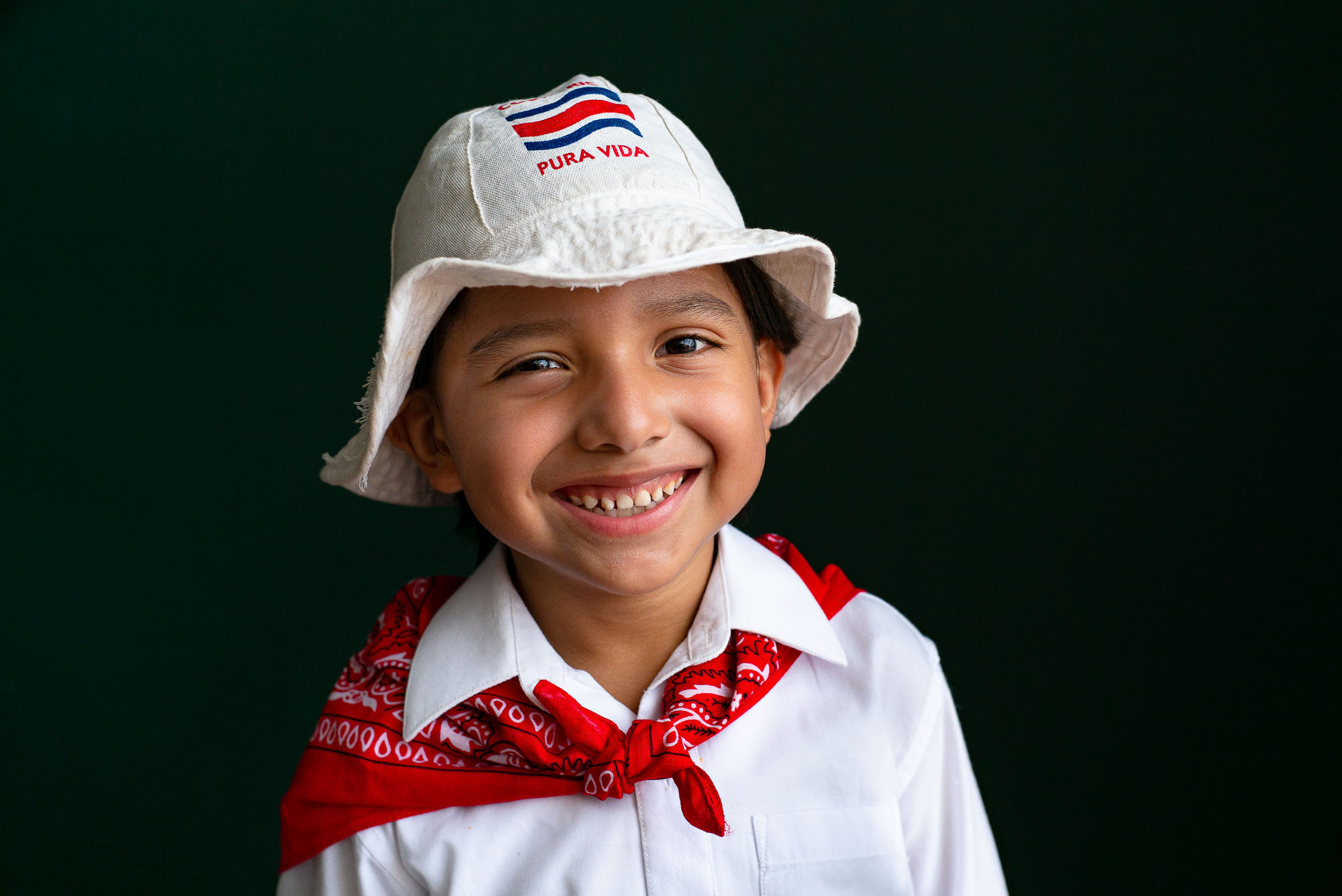
What to Eat
Just like people in the U.S. love chowing down on hamburgers and apple pie for the 4th of July, Costa Ricans have some Independence day favorites.
Typical Costa Rican food is always popular and always available. This is usually in the form of a casado, which is rice and beans, meat (chicken, fish, pork, or beef in a sauce), and a couple of sides like maybe a salad or mashed potatoes.
Roadside stands will also be selling parade favorites. These include:
- Empanadas: something between a tortilla and bread, made from corn, wrapped around a filling (meat, yucca, plantains, etc.) and fried
- Enyucados: similar to an empanada but made from yucca instead of corn
- Pinches: bits of barbecued meat served on a skewer (kind of like a kebab)
For dessert, stop by the shaved ice stand. Here you can get your sugar fix for the week. Choose from a variety of flavors and finish it off with sweetened condensed milk!
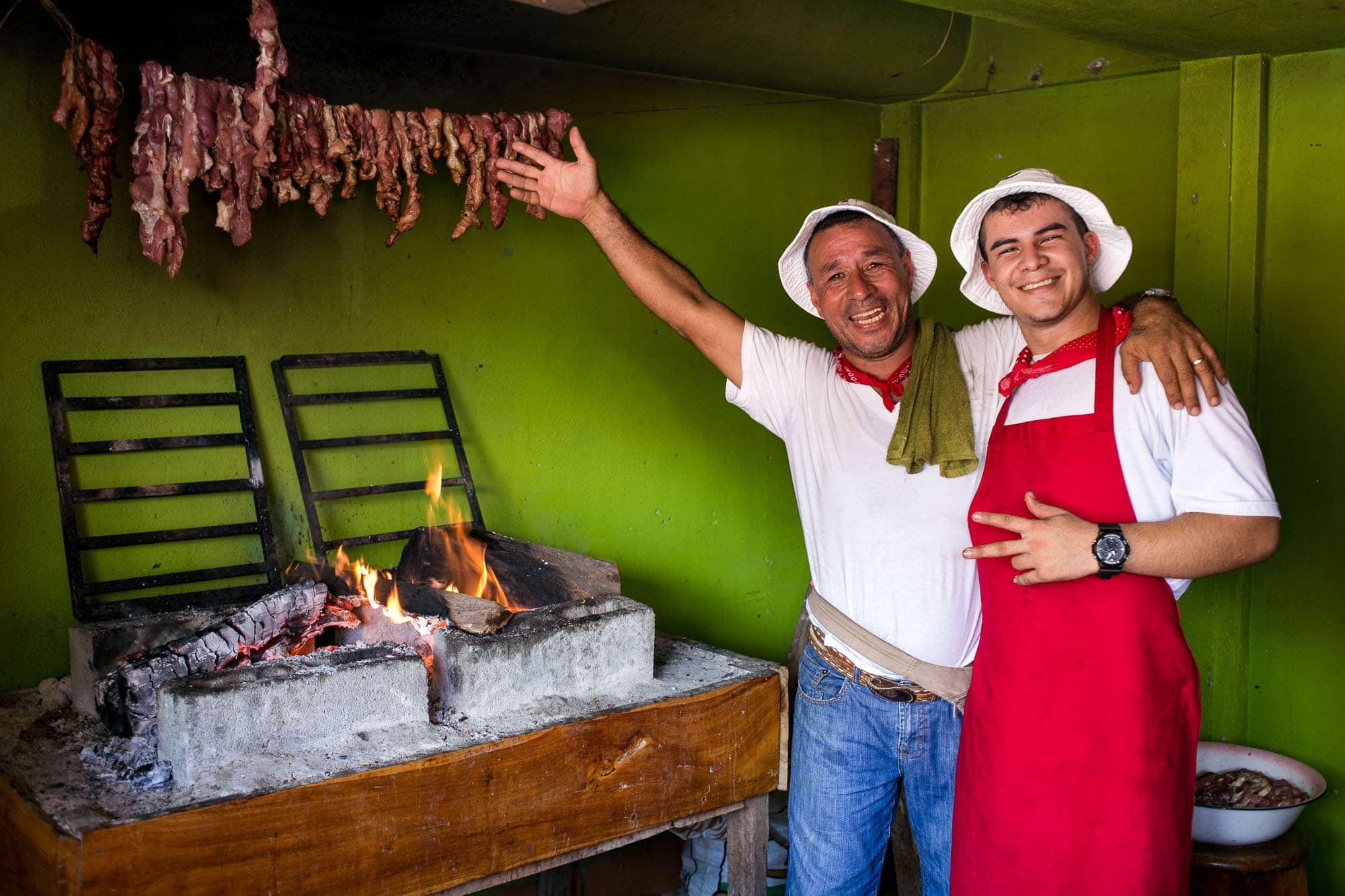
Independence Day in Costa Rica is quite an experience. I’ve tried to give you an idea of what to expect and how to prepare, but honestly, you have to experience it for yourself! It isn’t quite like anything I’ve seen before — especially those mascaradas!
Whether you’re coming to Costa Rica for a family trip or for a special event (like your wedding!), the middle of September is an exciting time to come. You’ll get a fascinating peek into a delightful part of Costa Rica’s rich traditions.
Want to see more photos from Independence Day? Check out my yearly posts below:
Independence Day Parades in Costa Rica
Local Traditions for Celebrating Independence Day in Costa Rica
Independence Celebrations in Costa Rica
Looking for more information on traveling in Costa Rica? Don’t hesitate to check out my must-know travel tips here!
